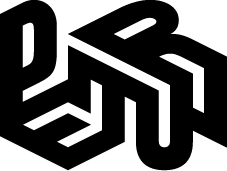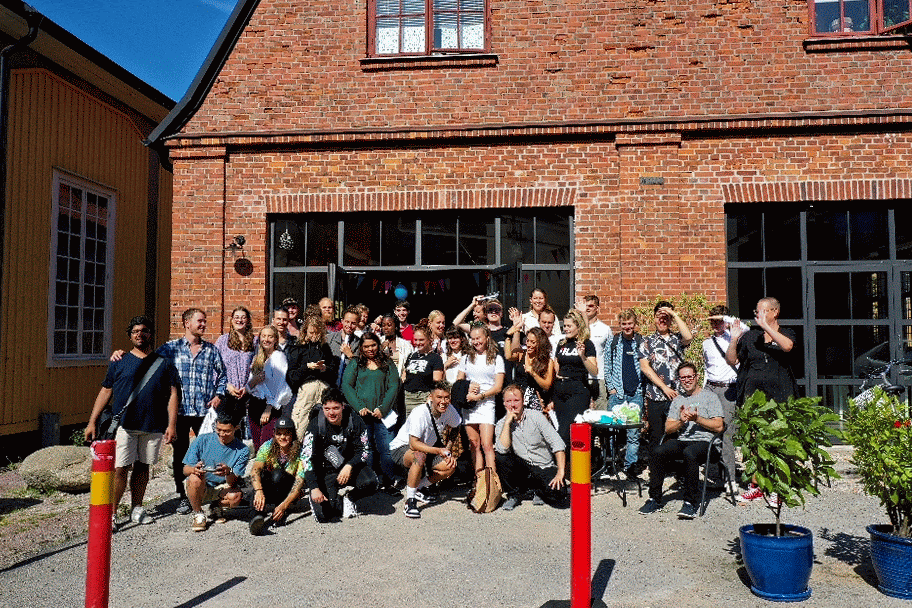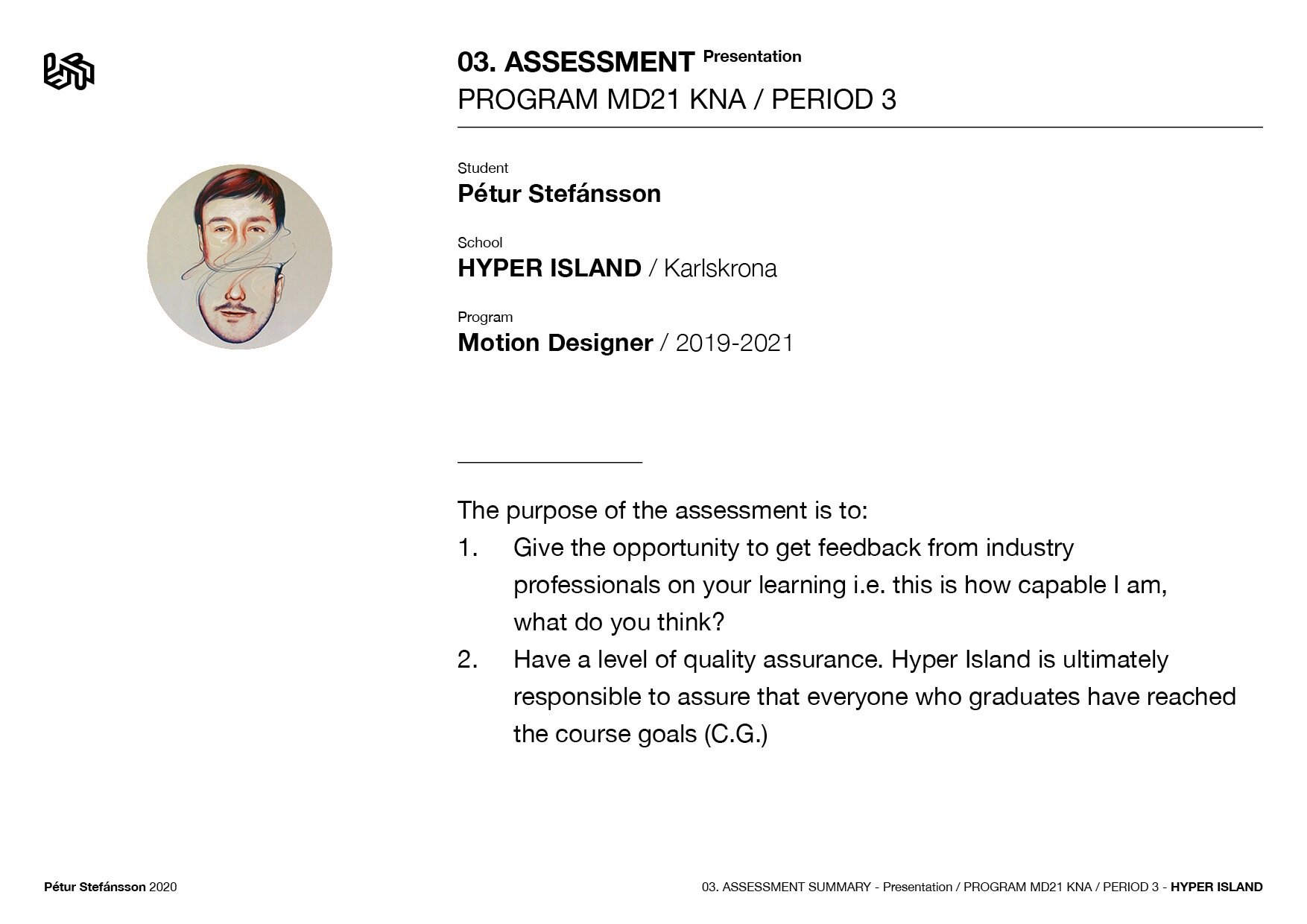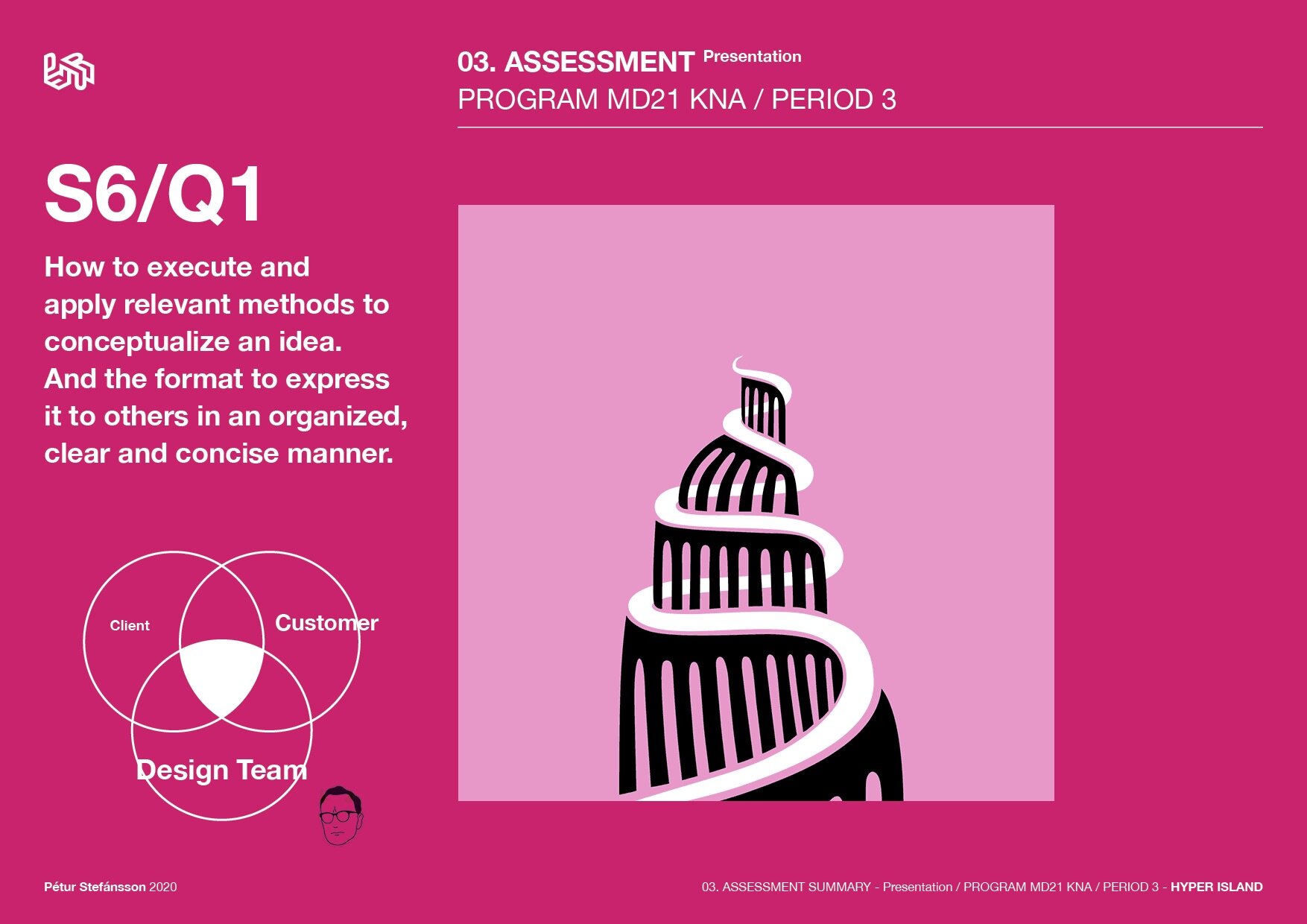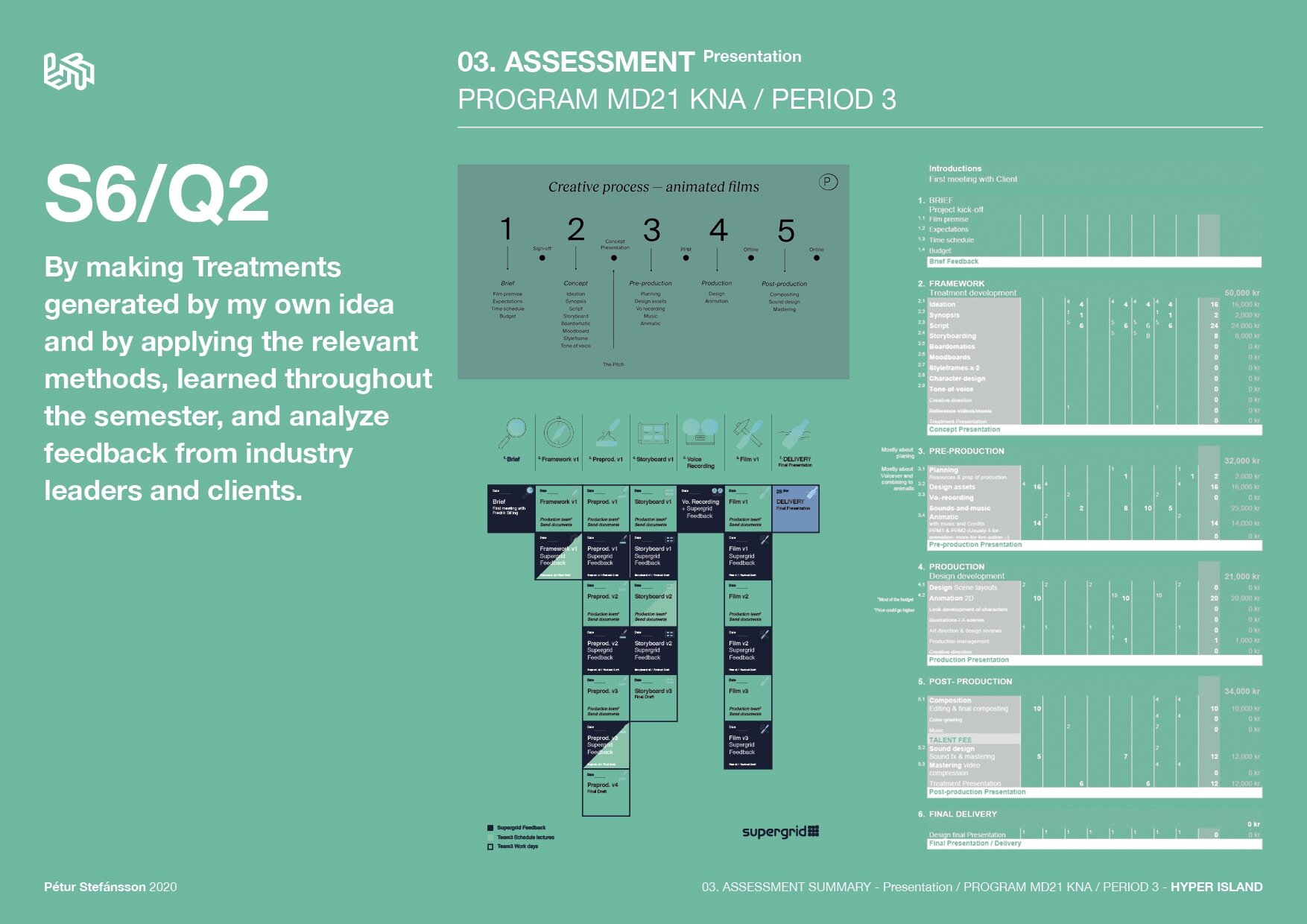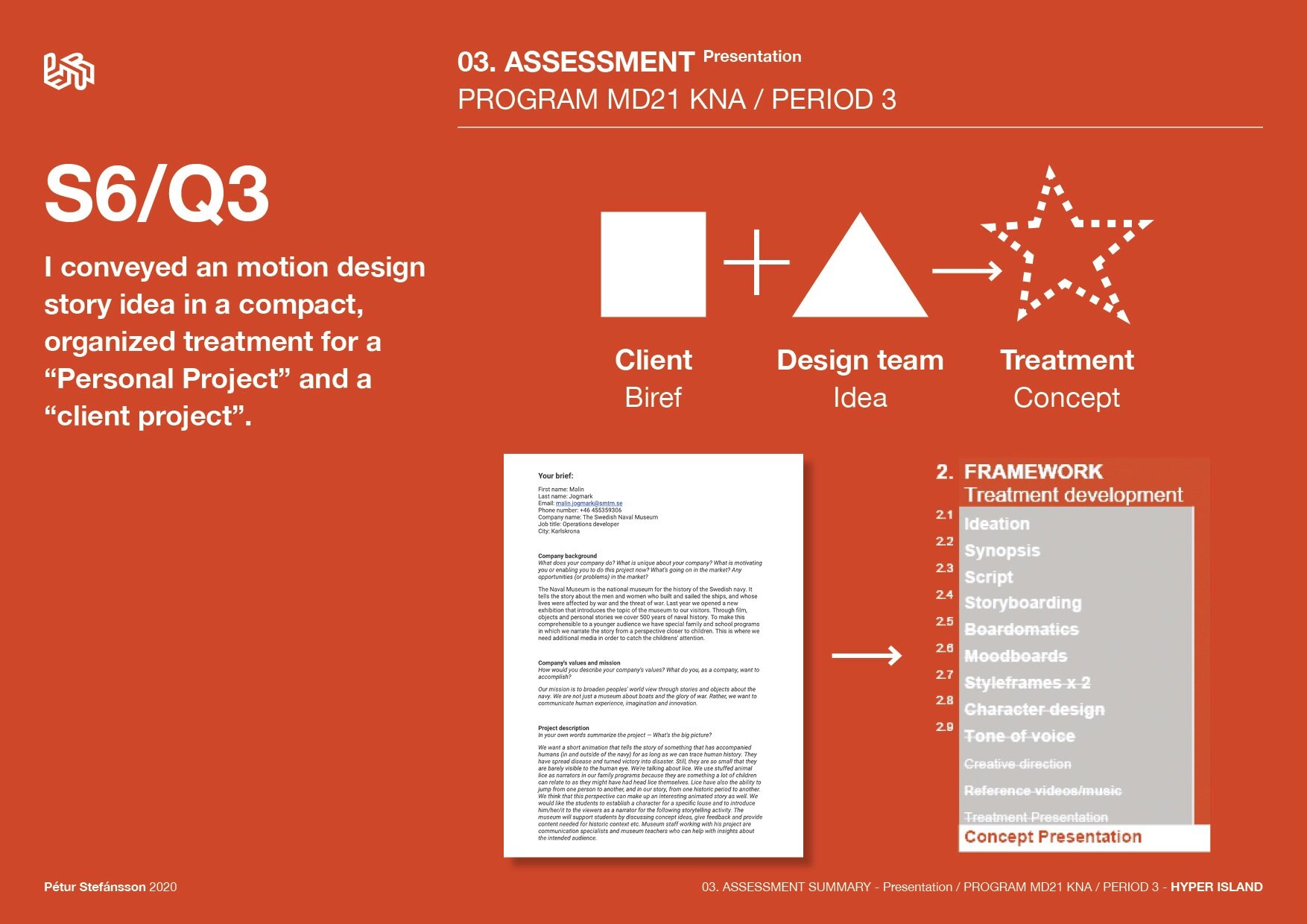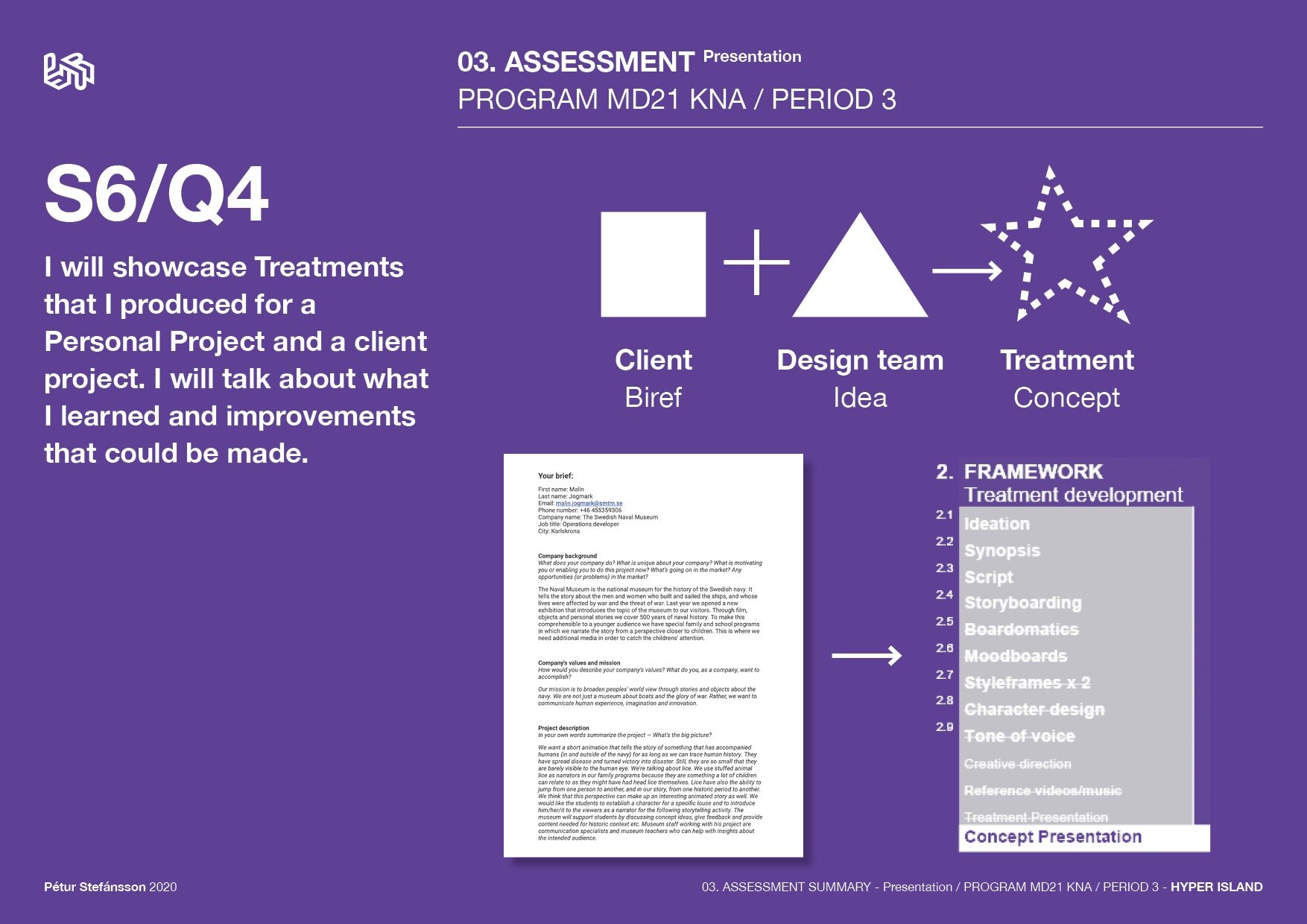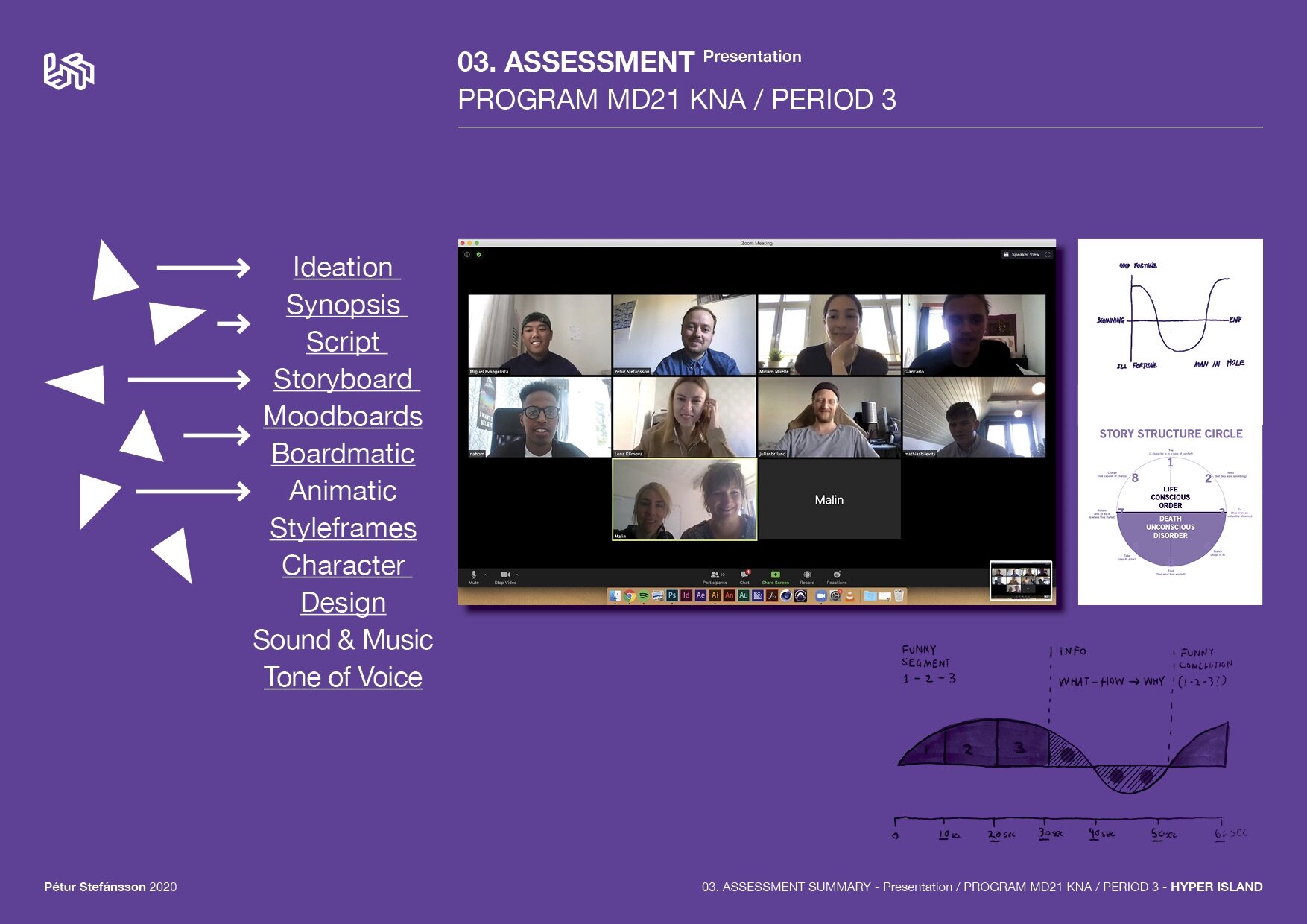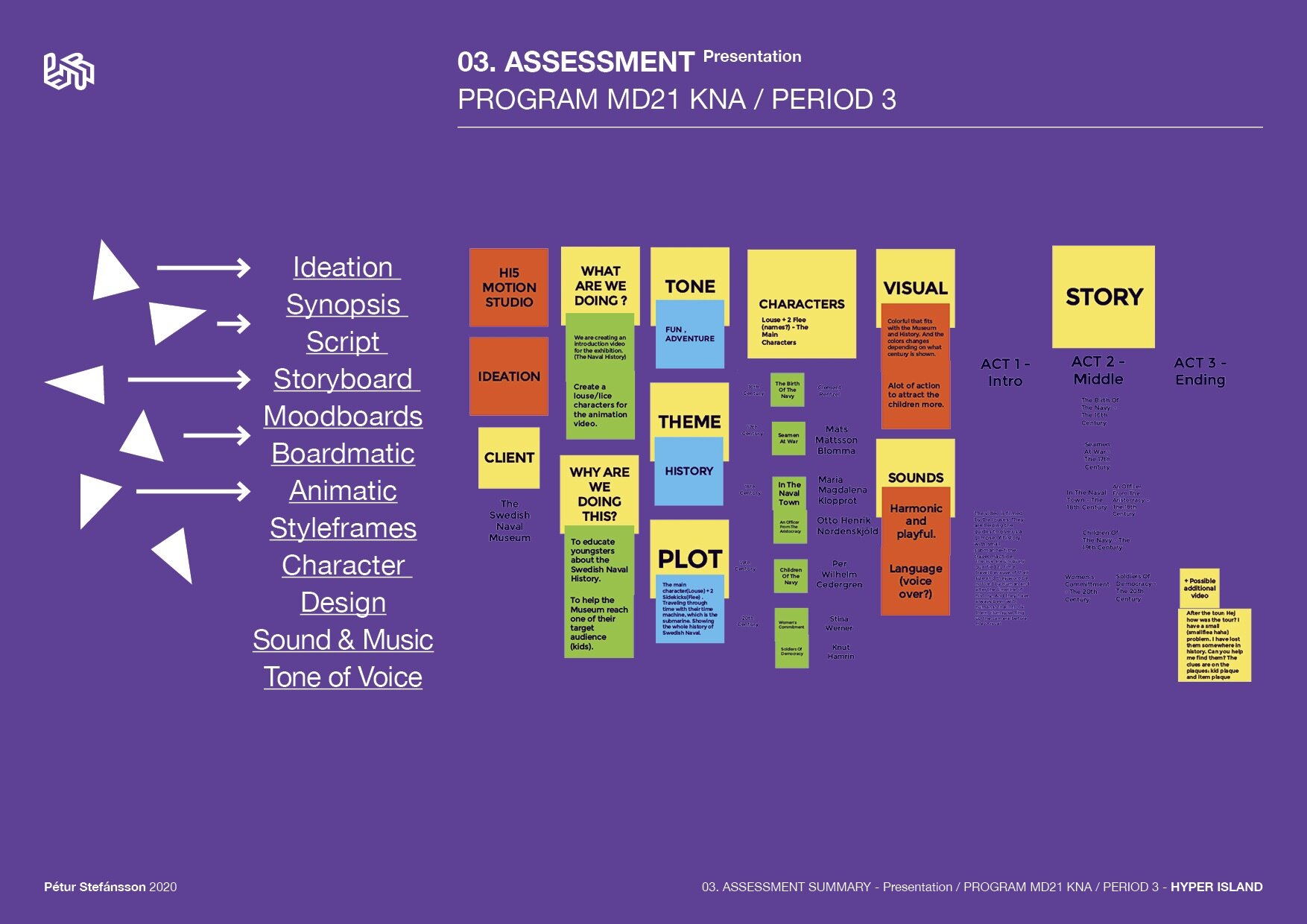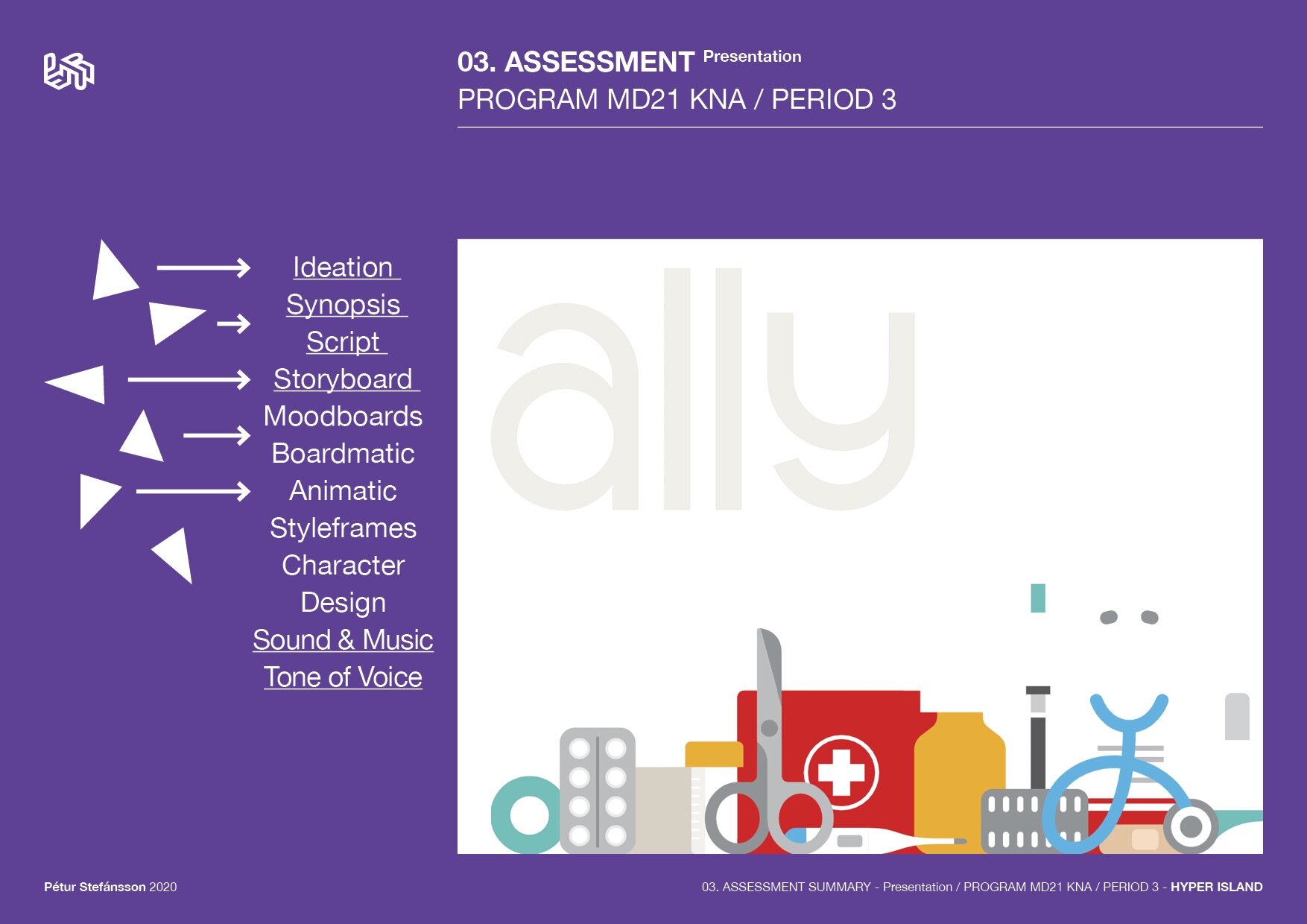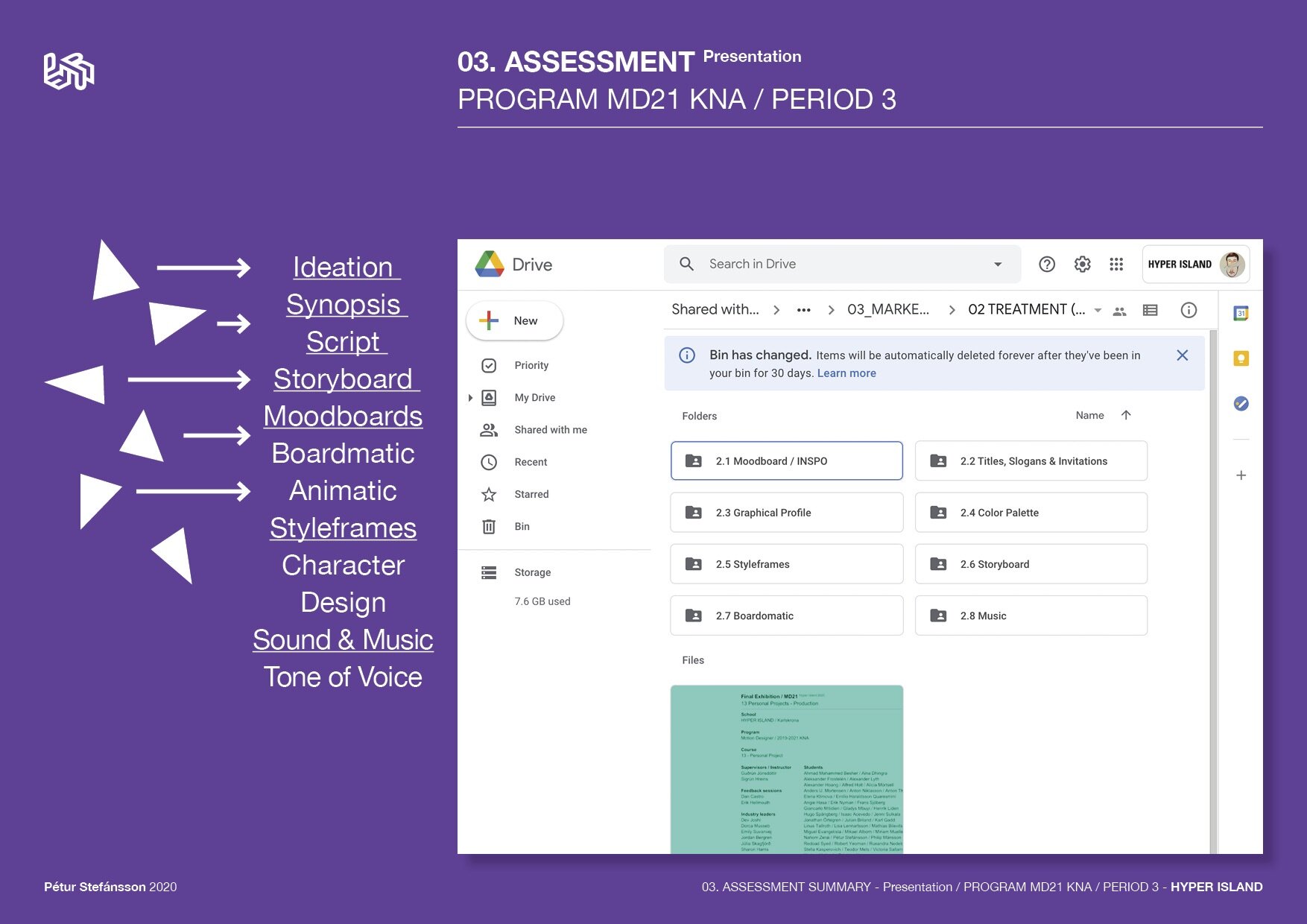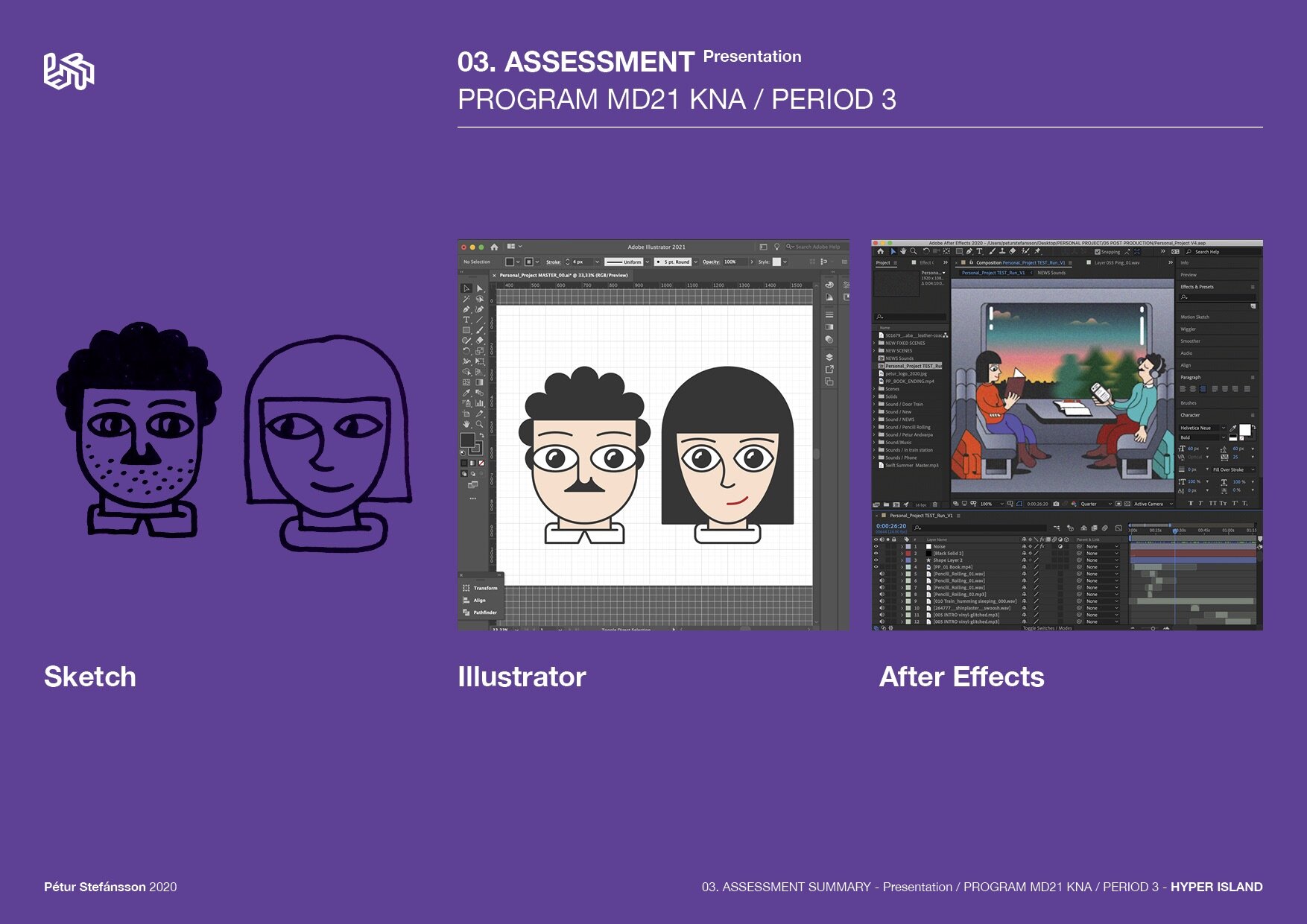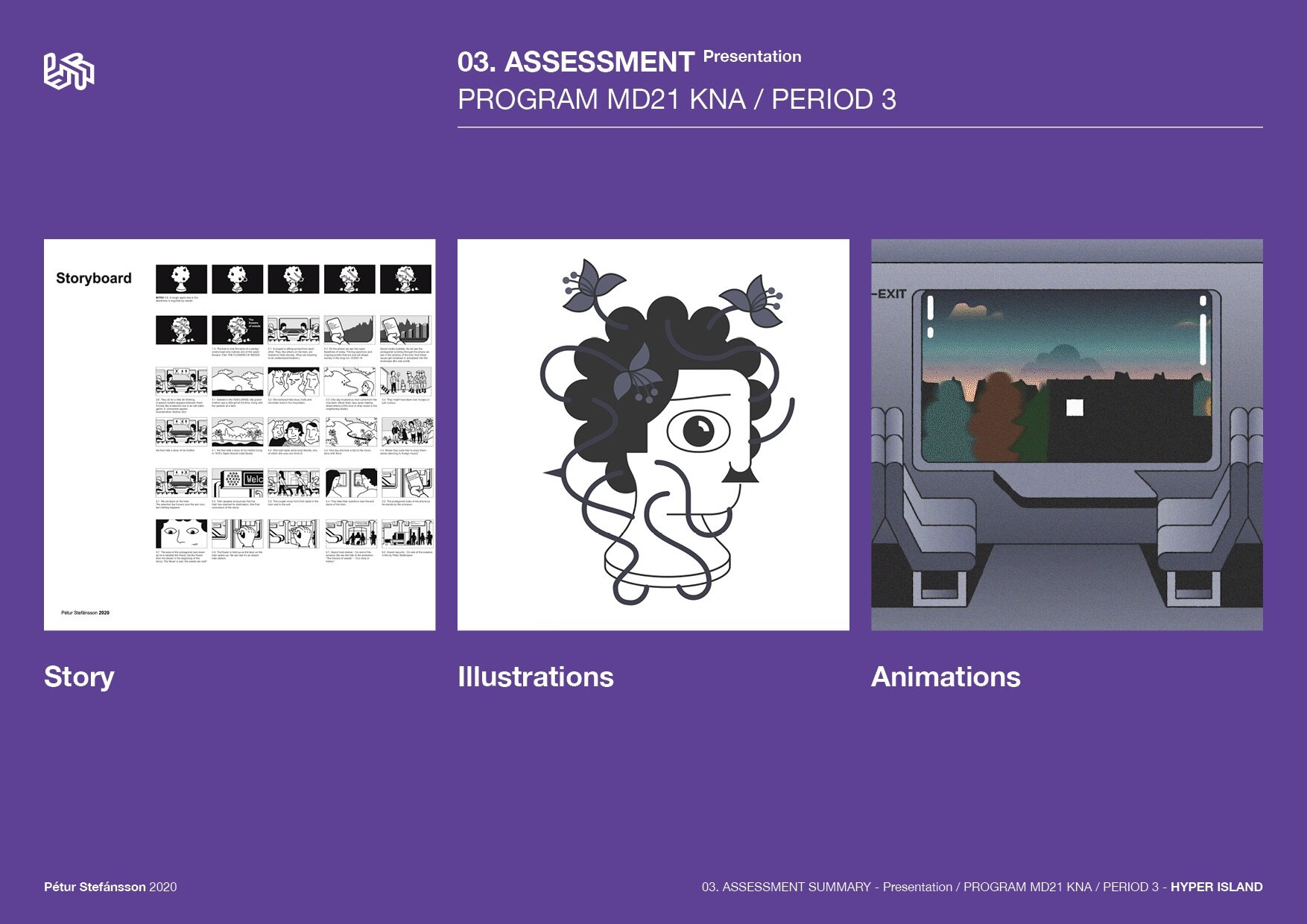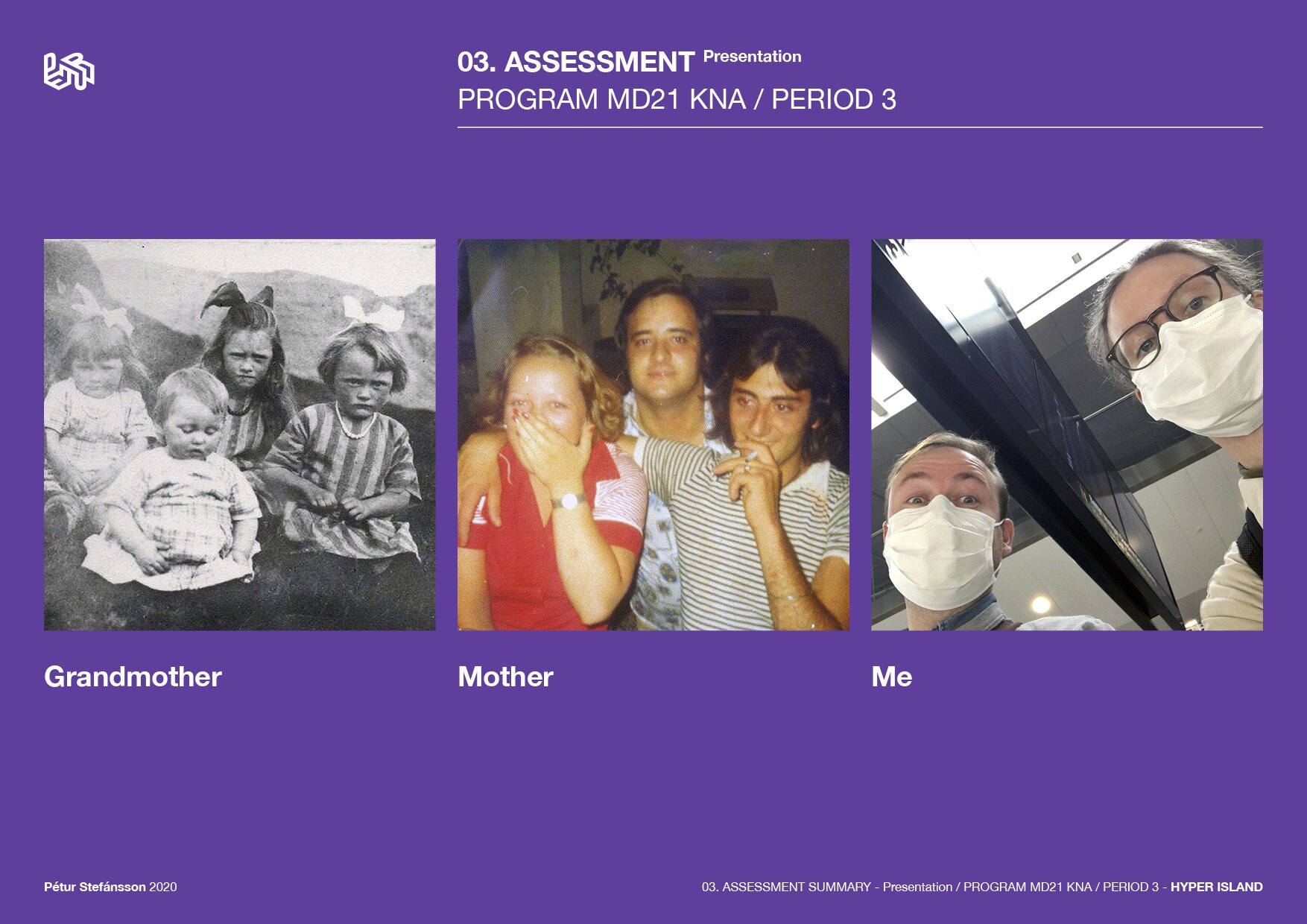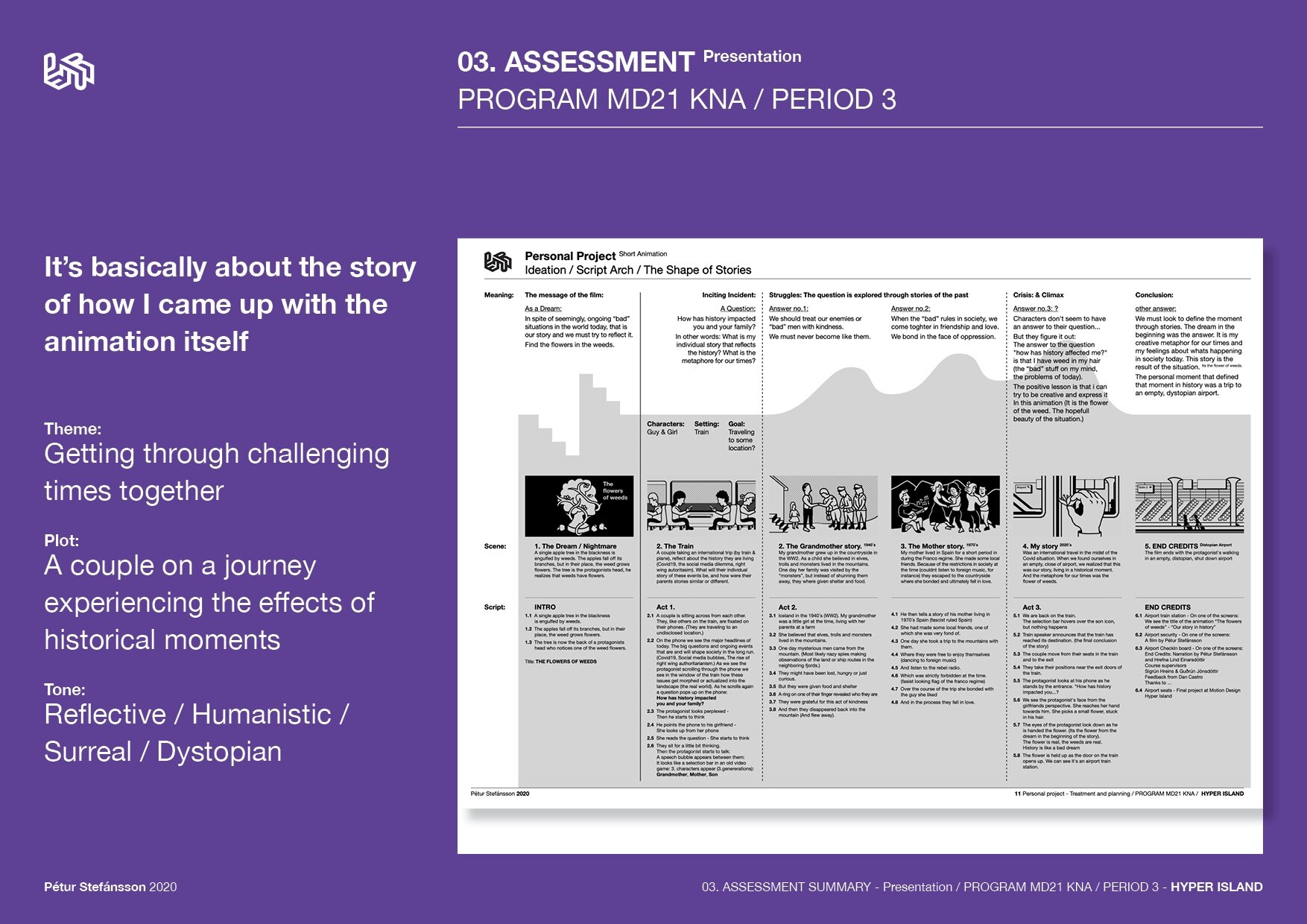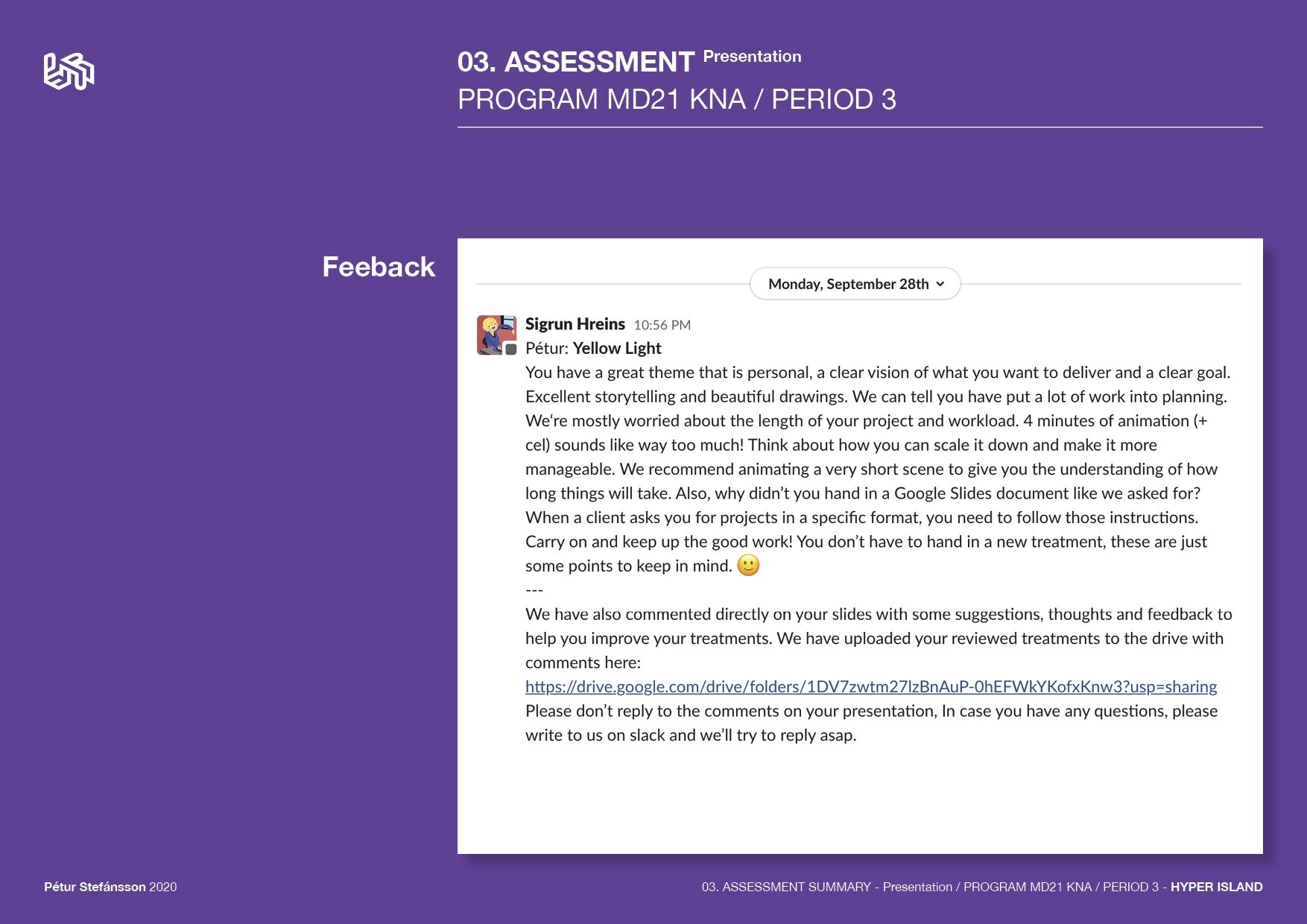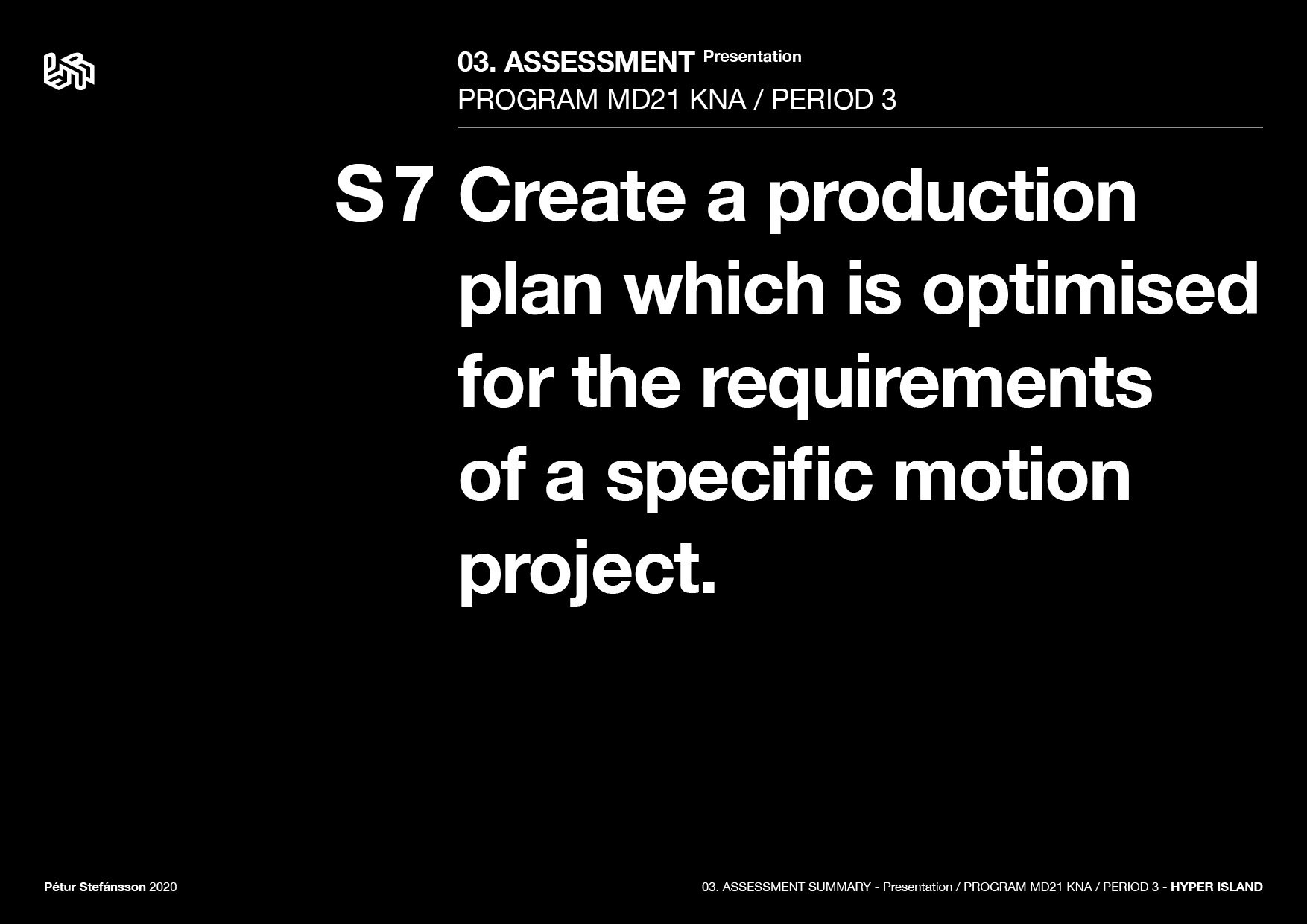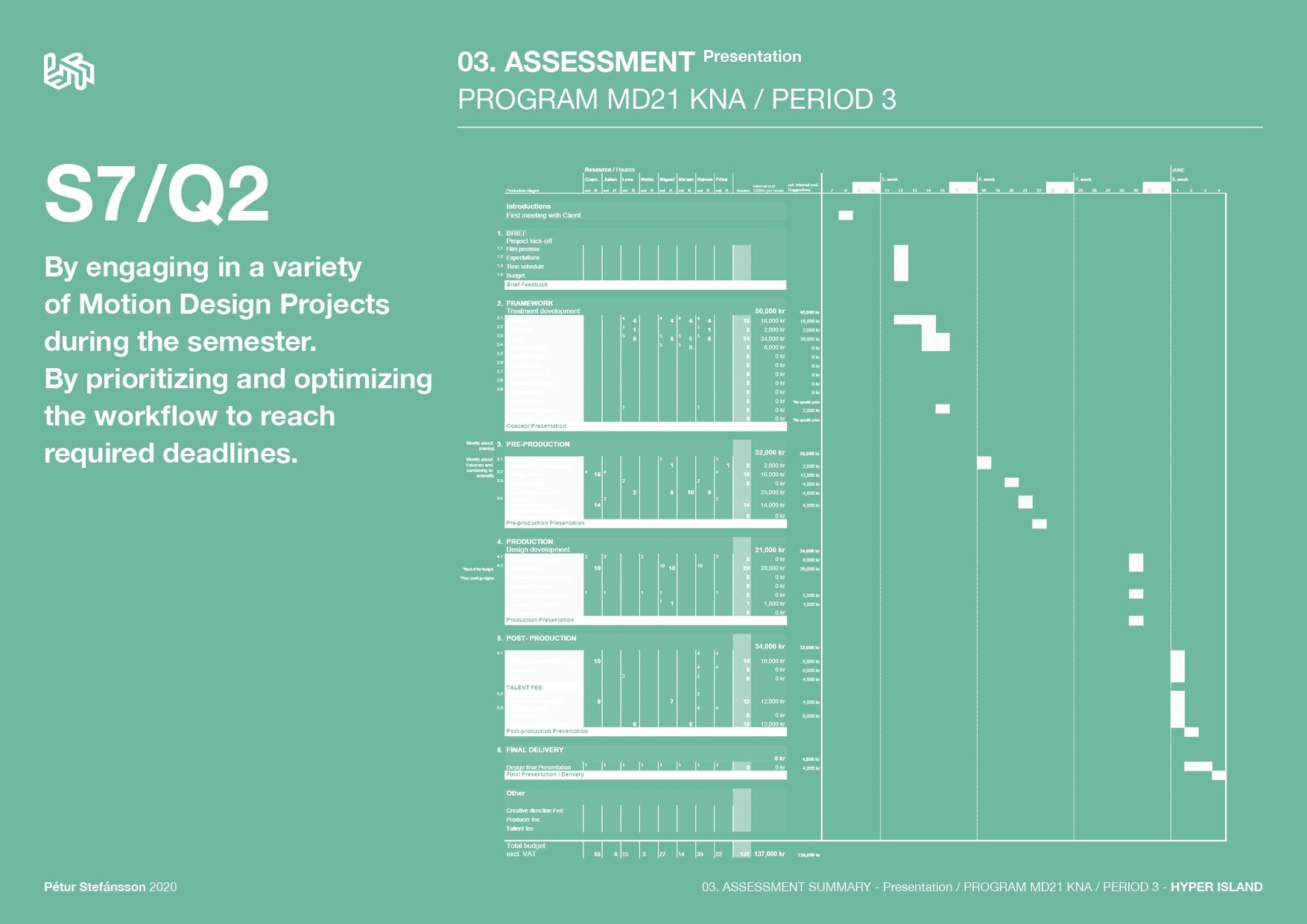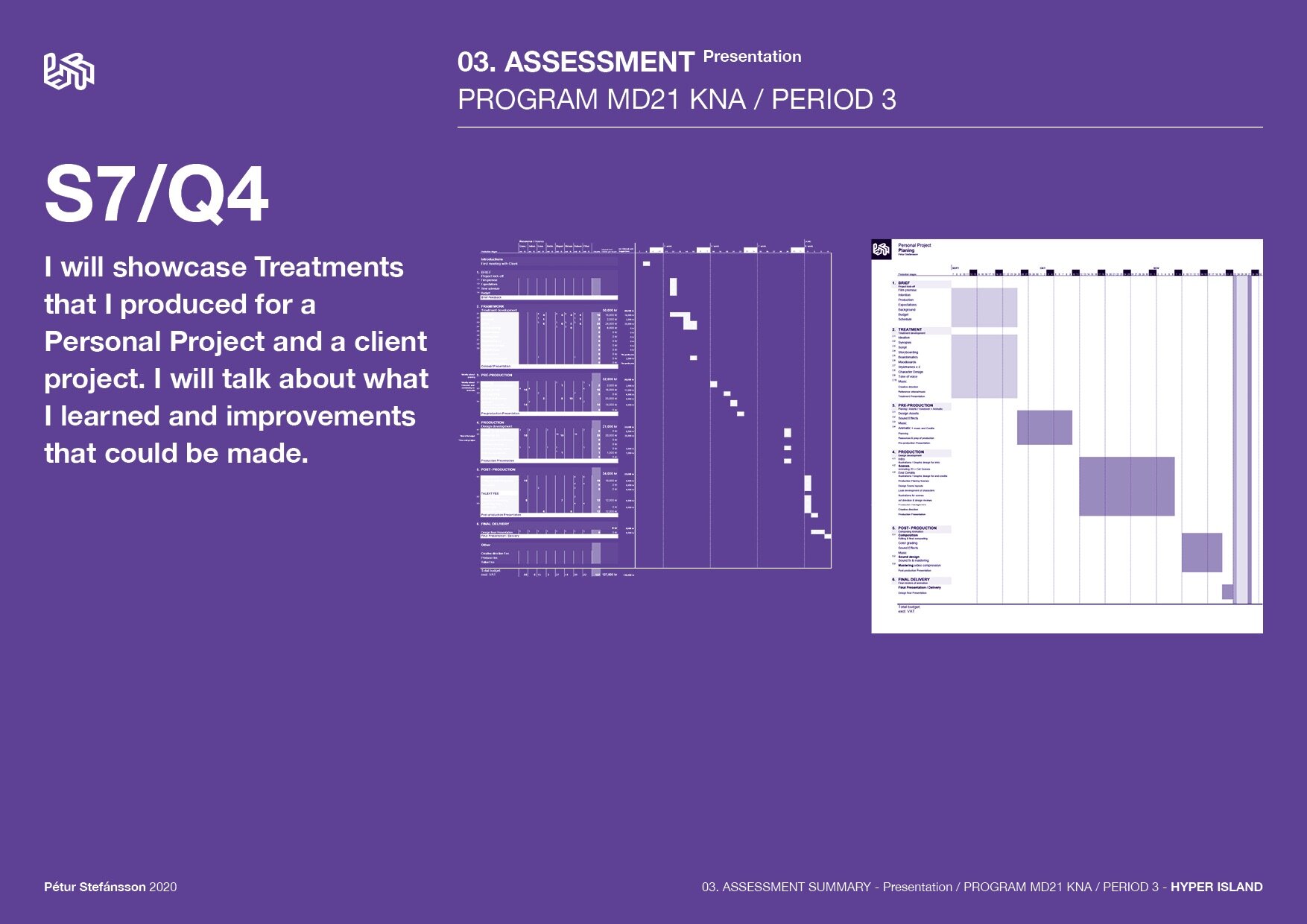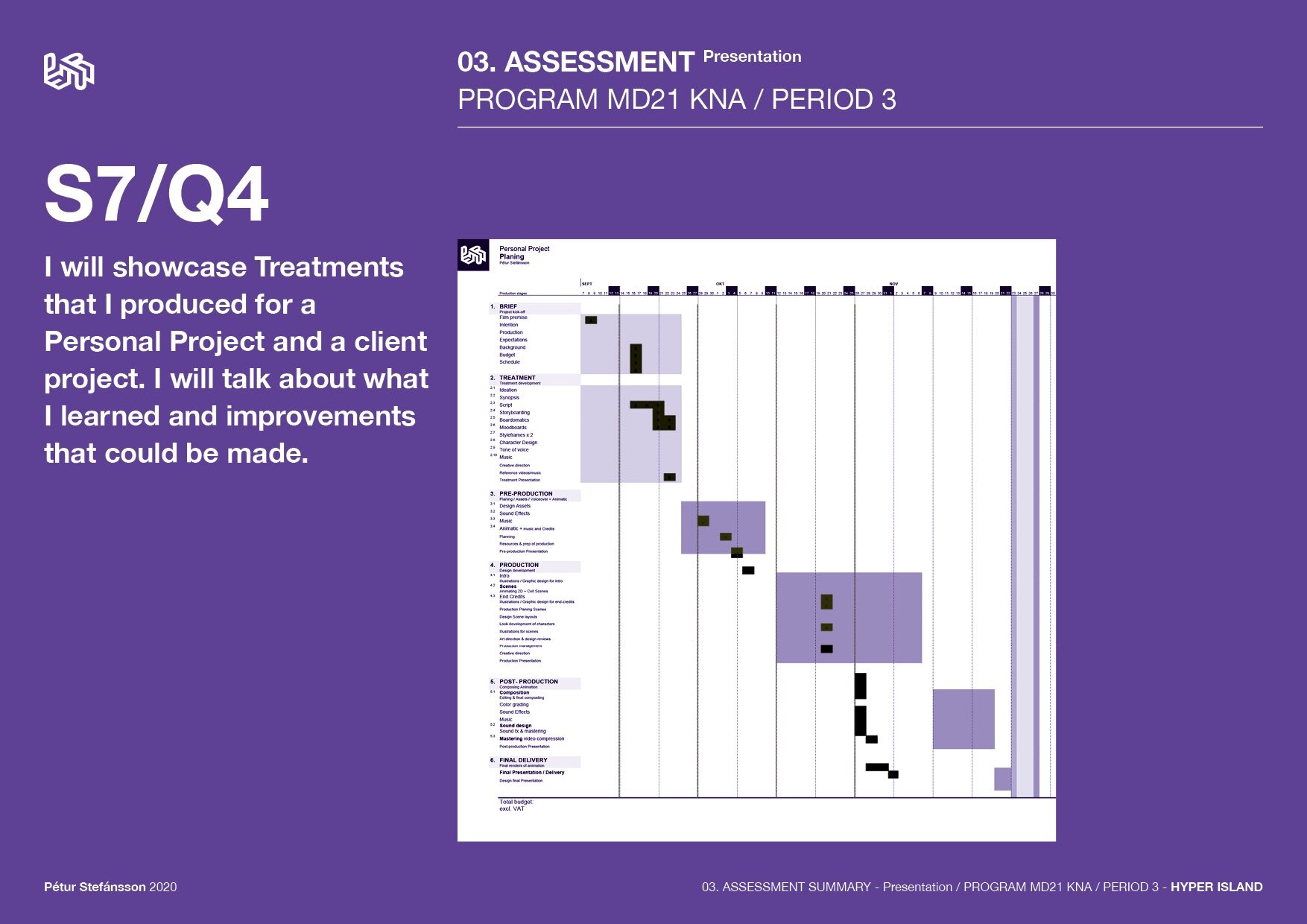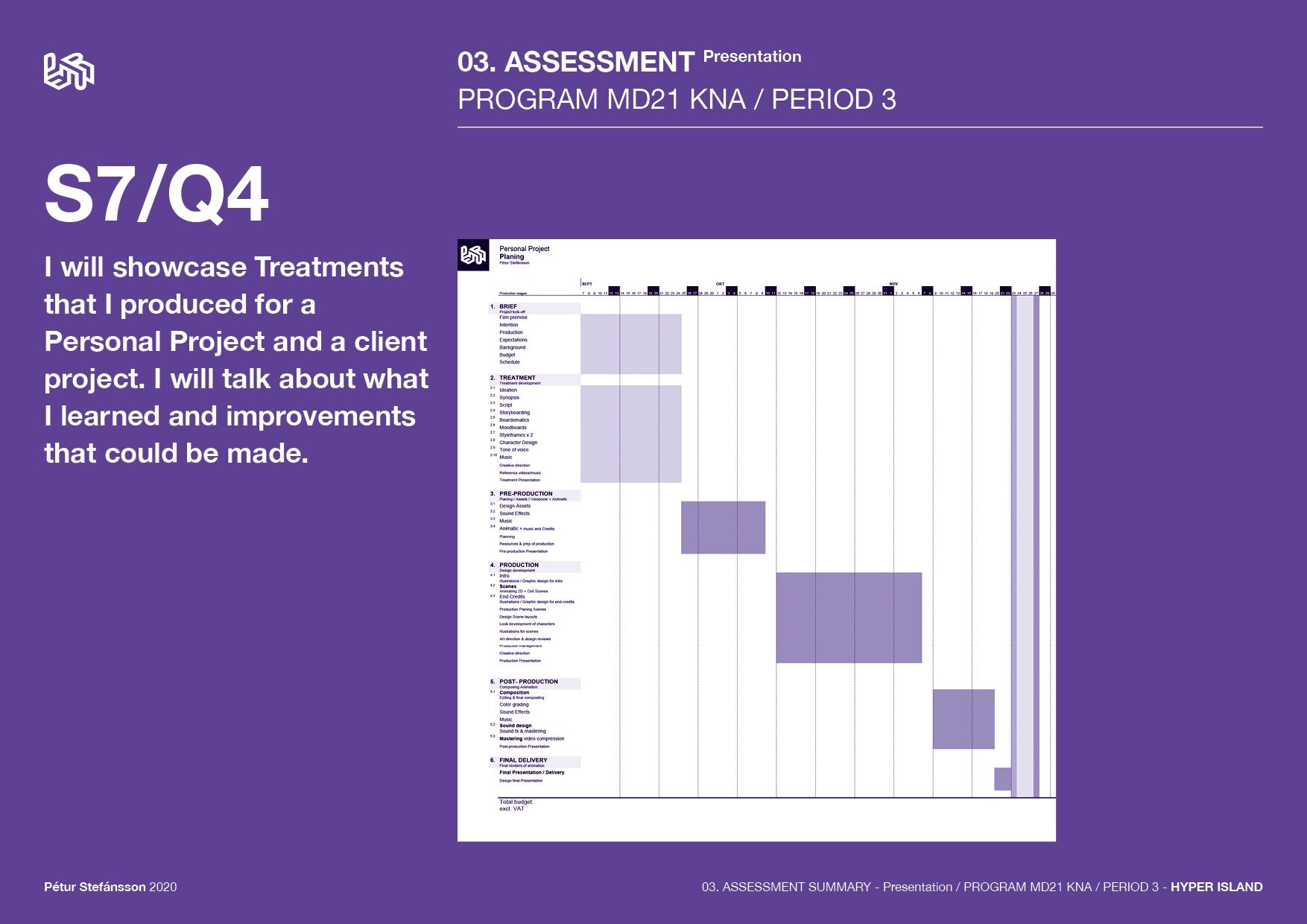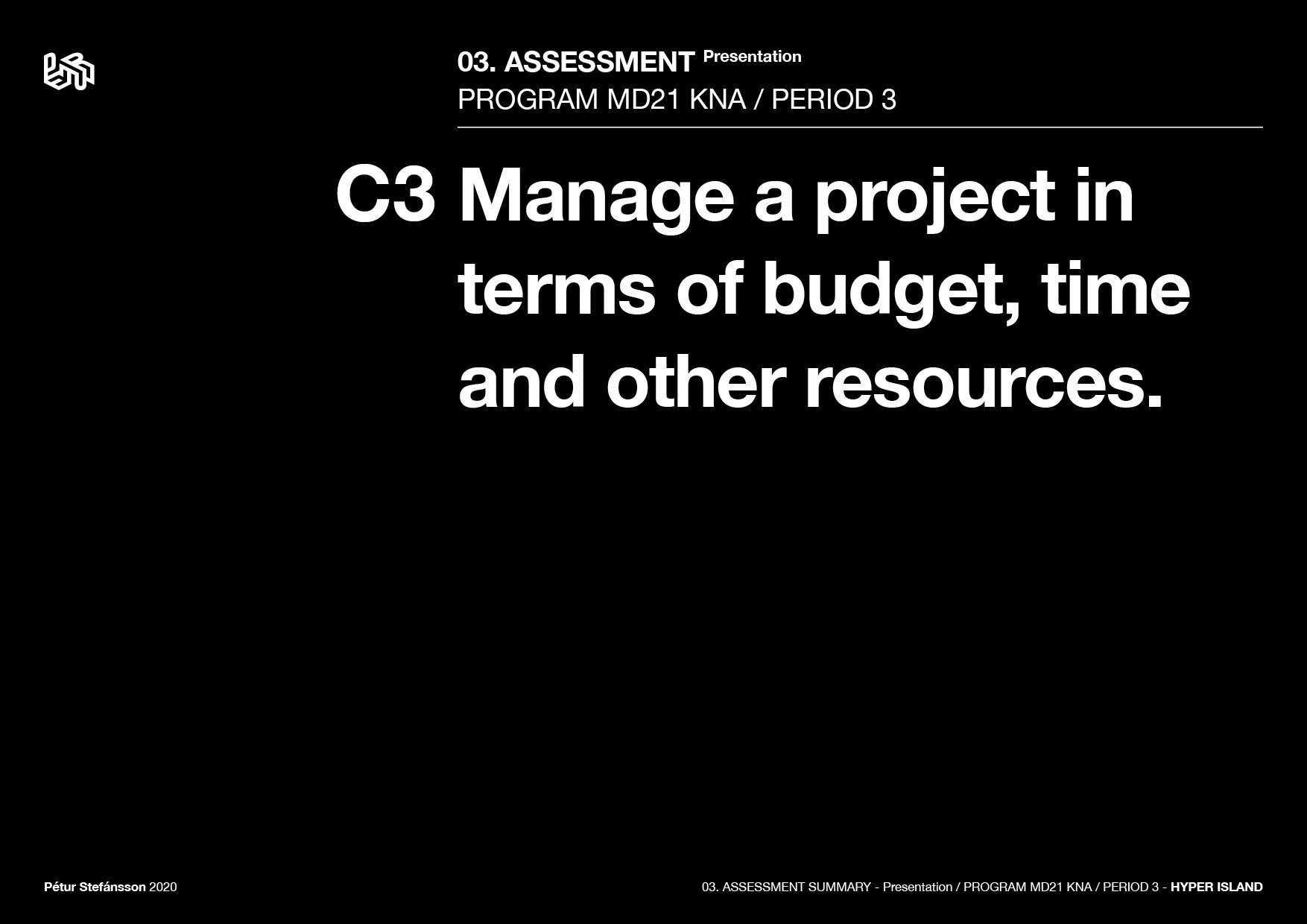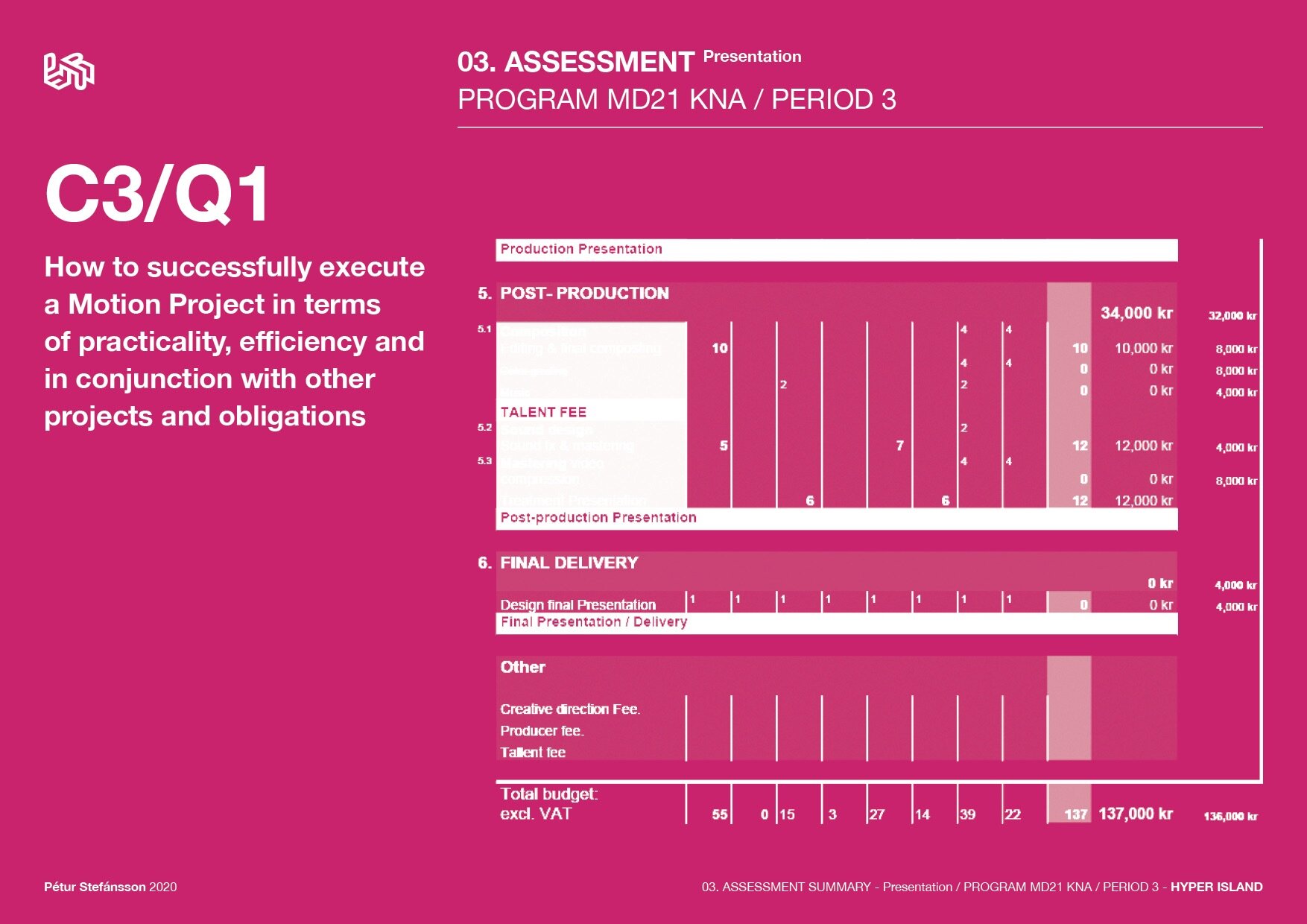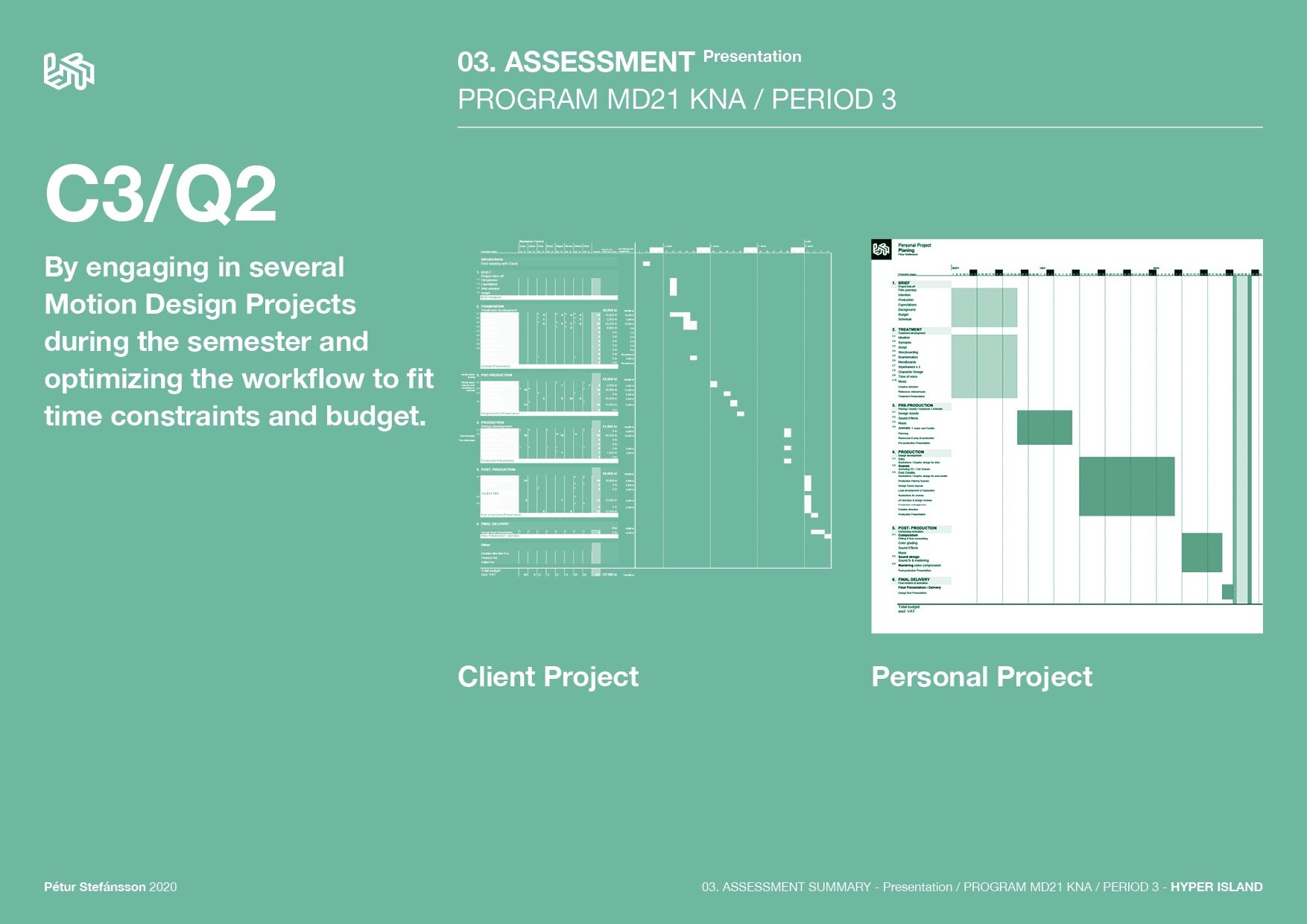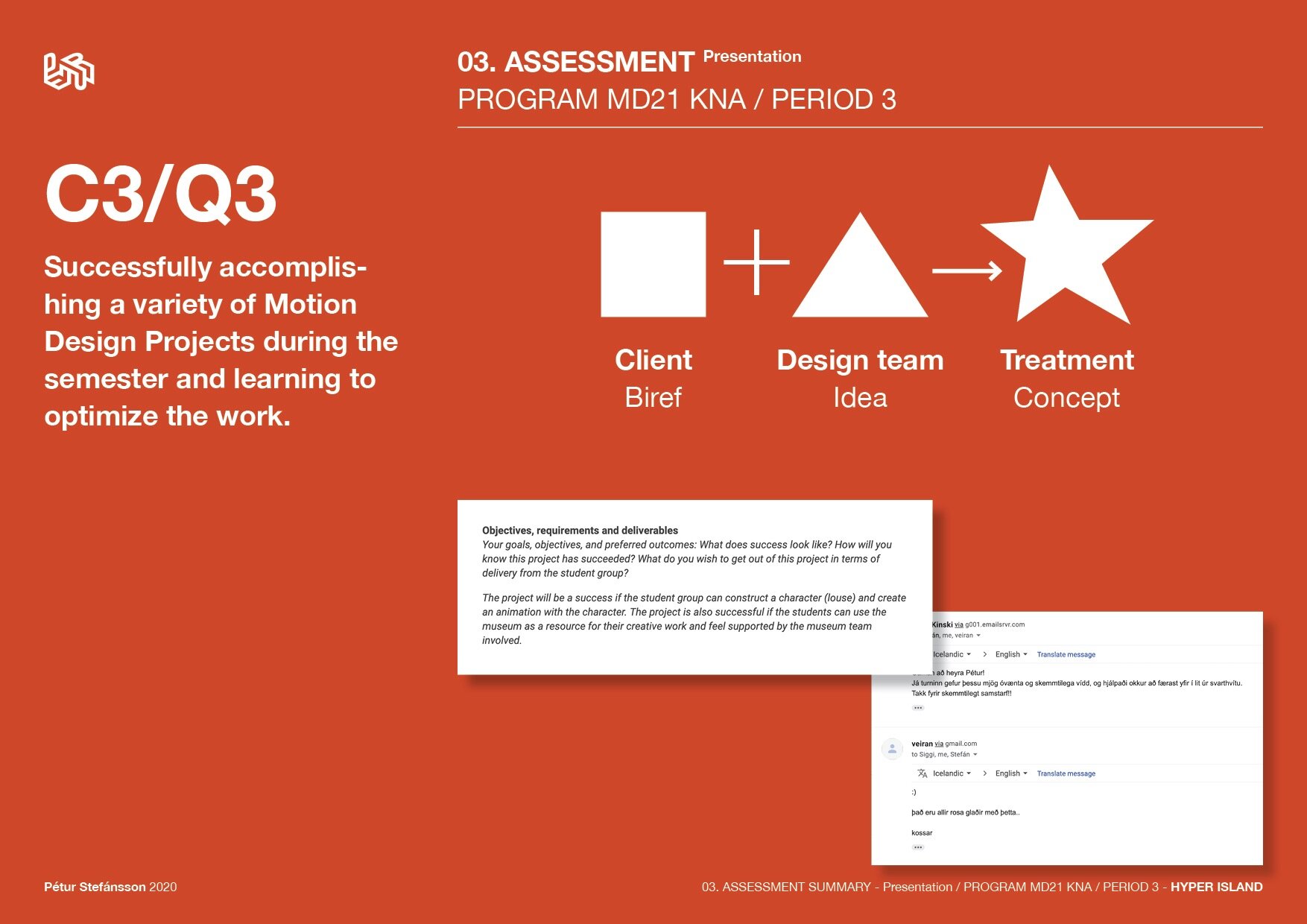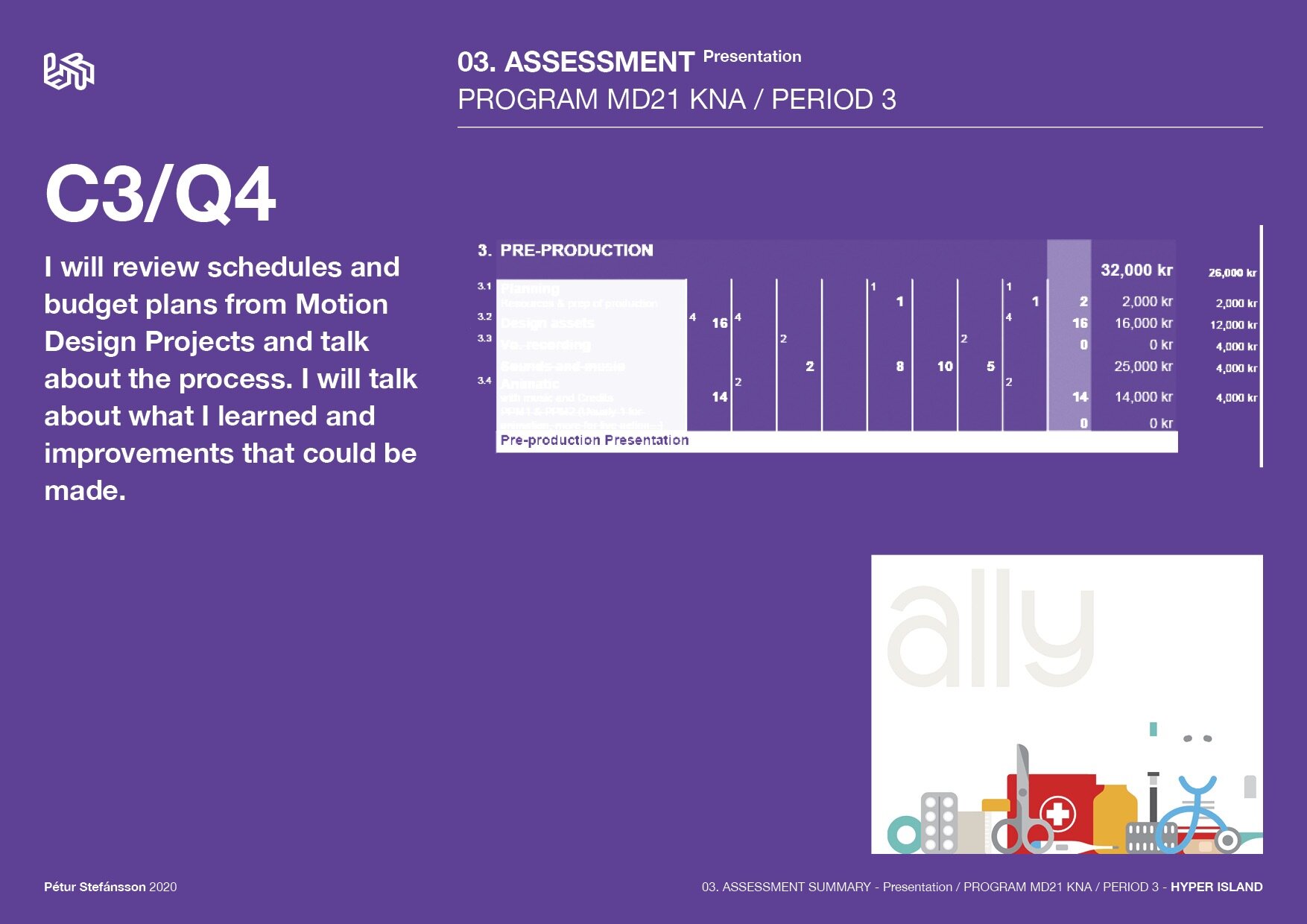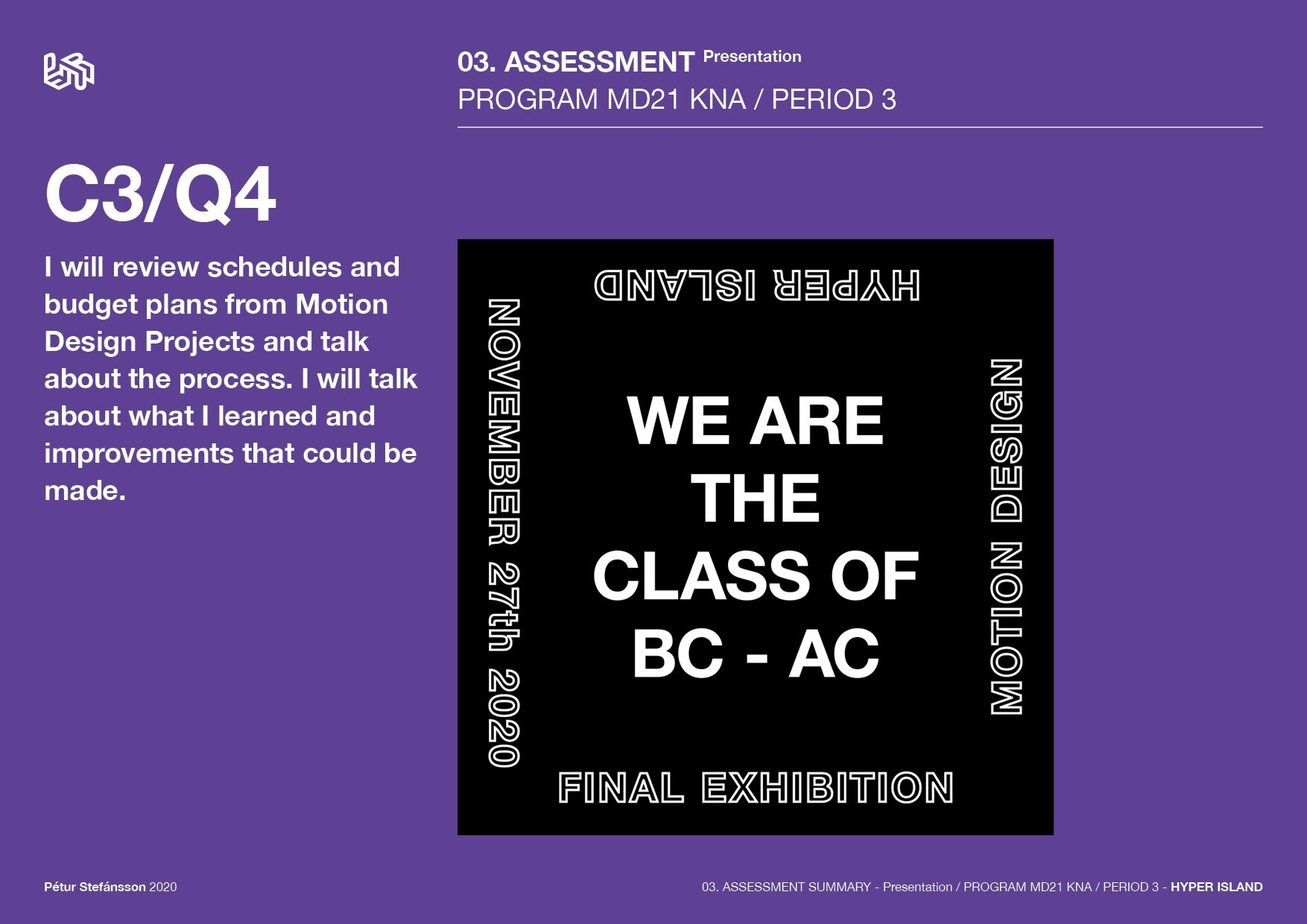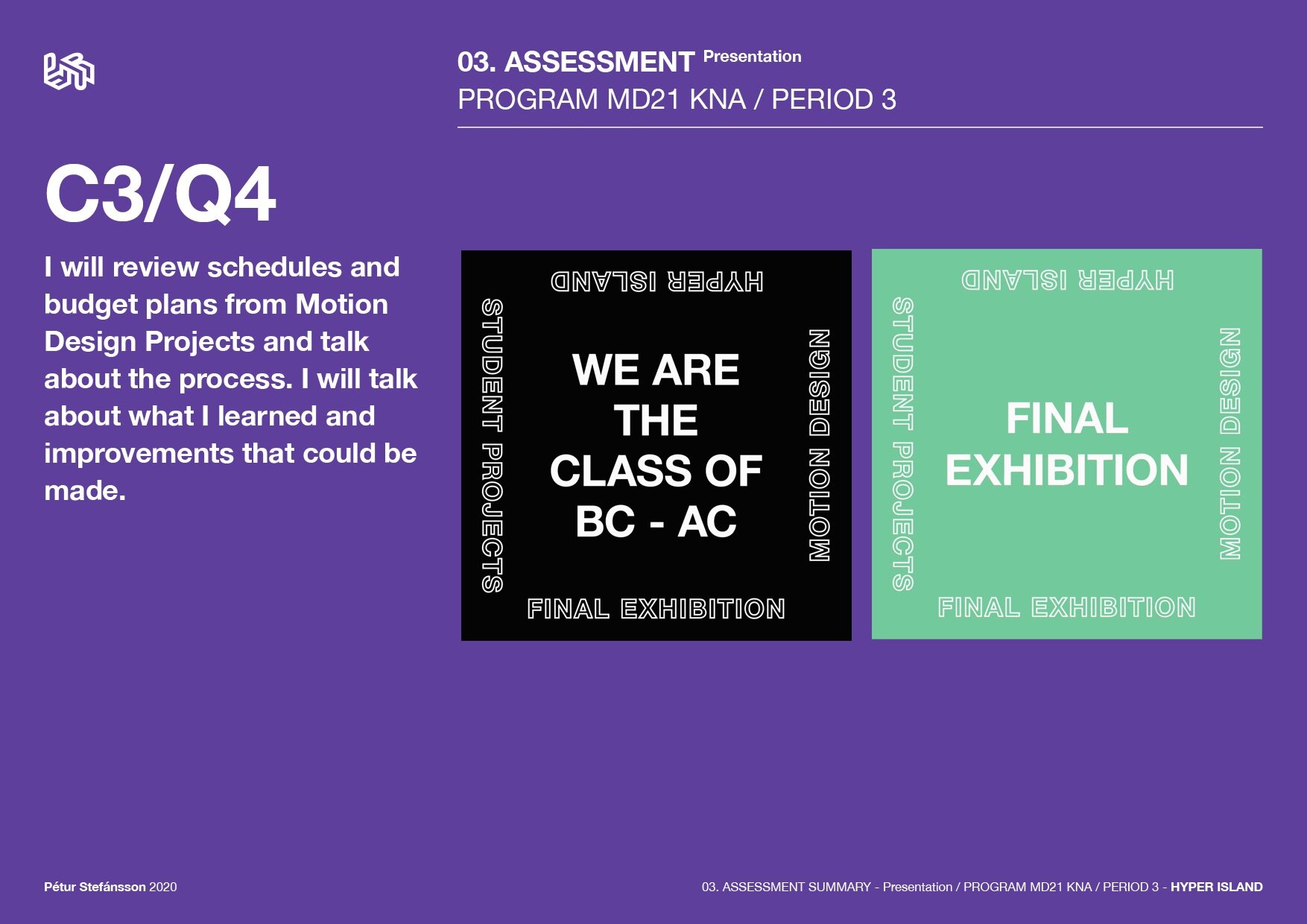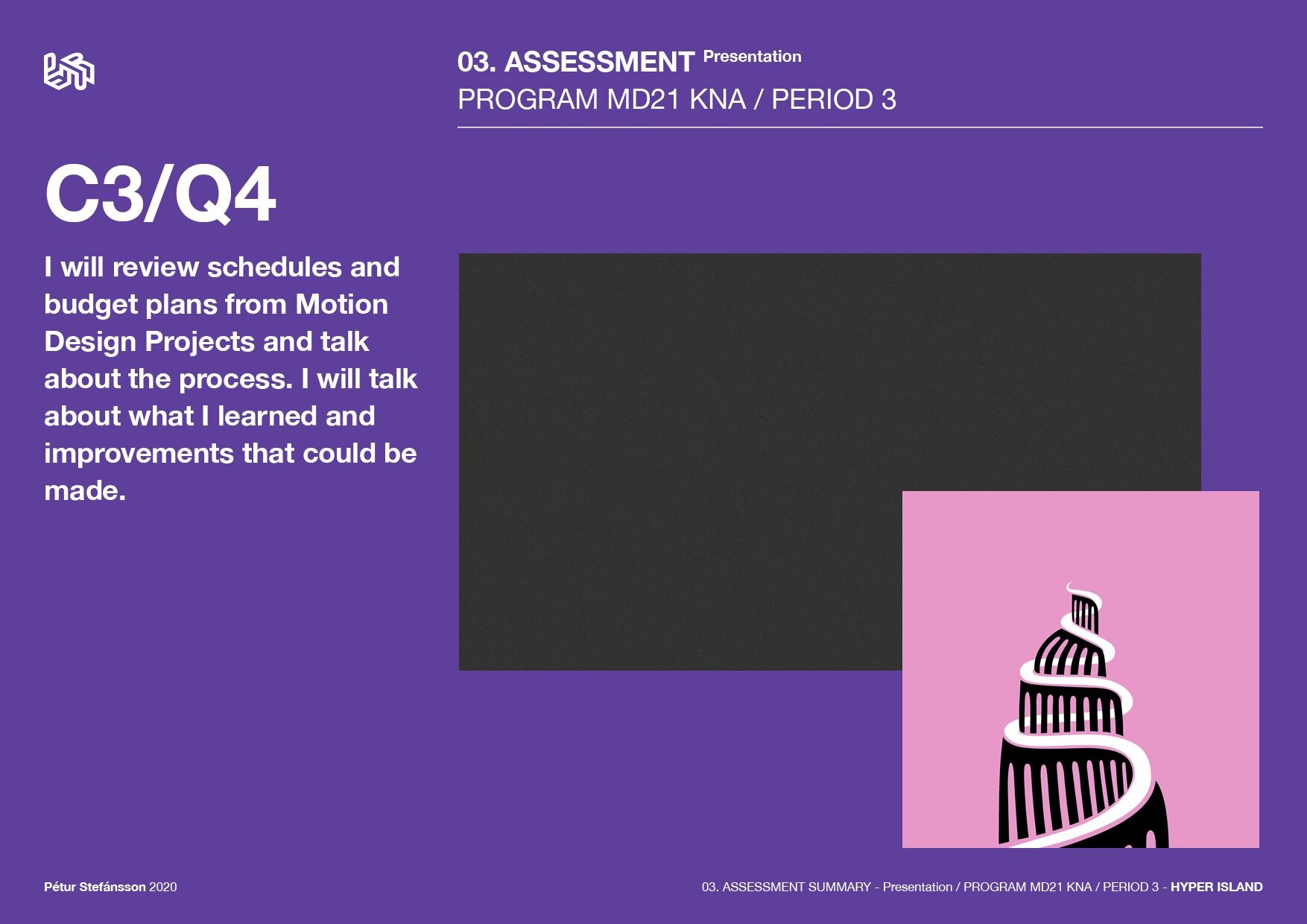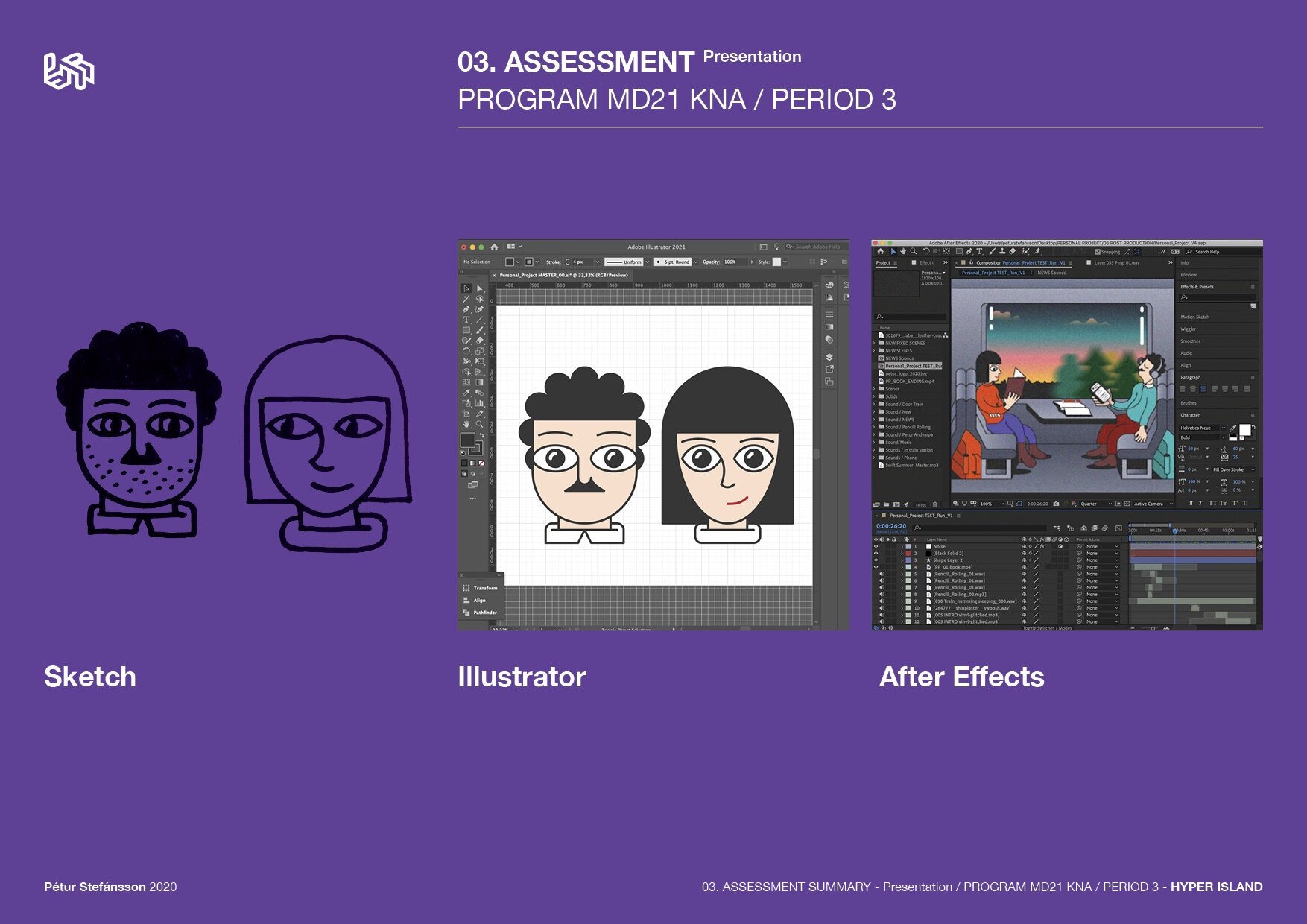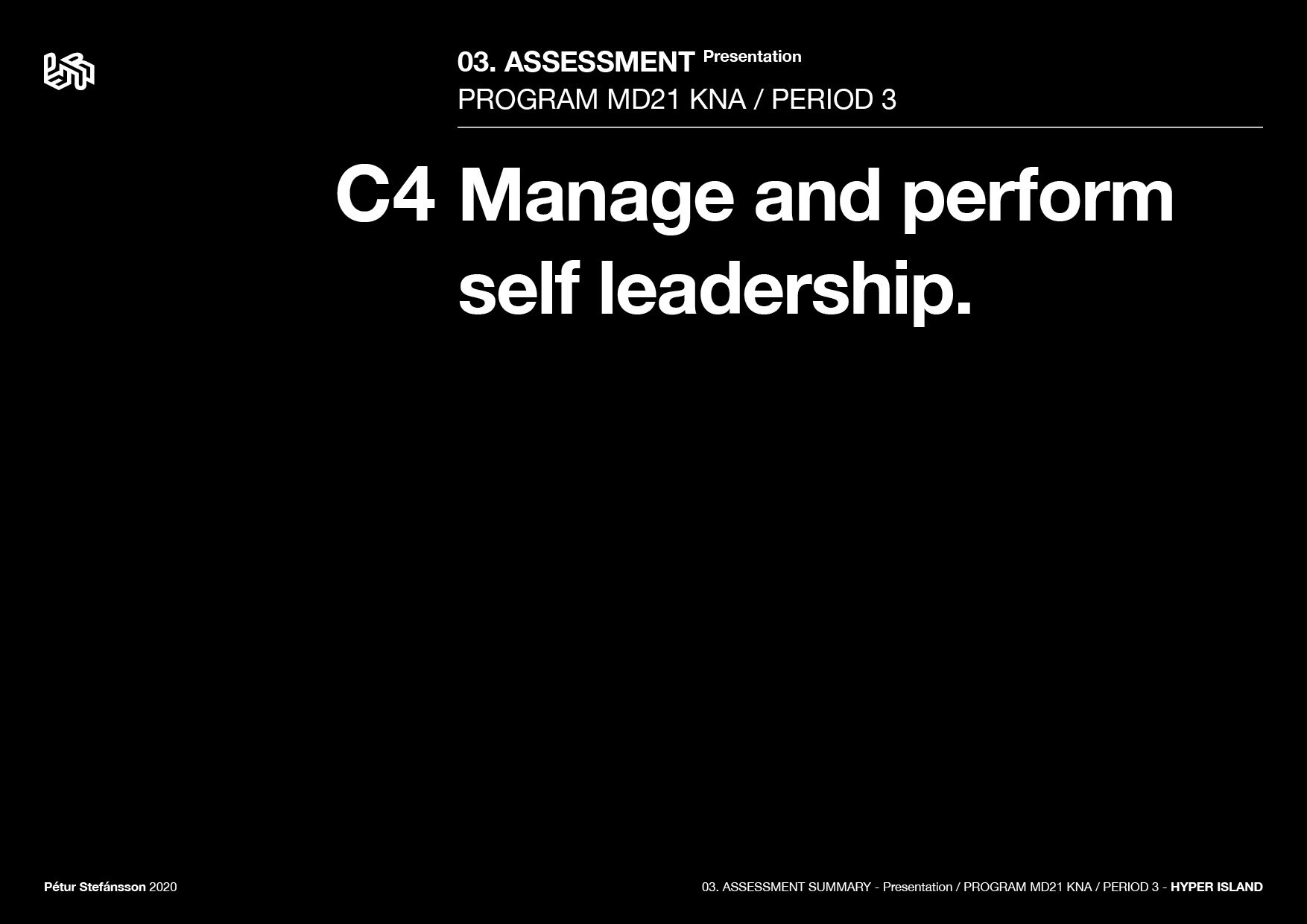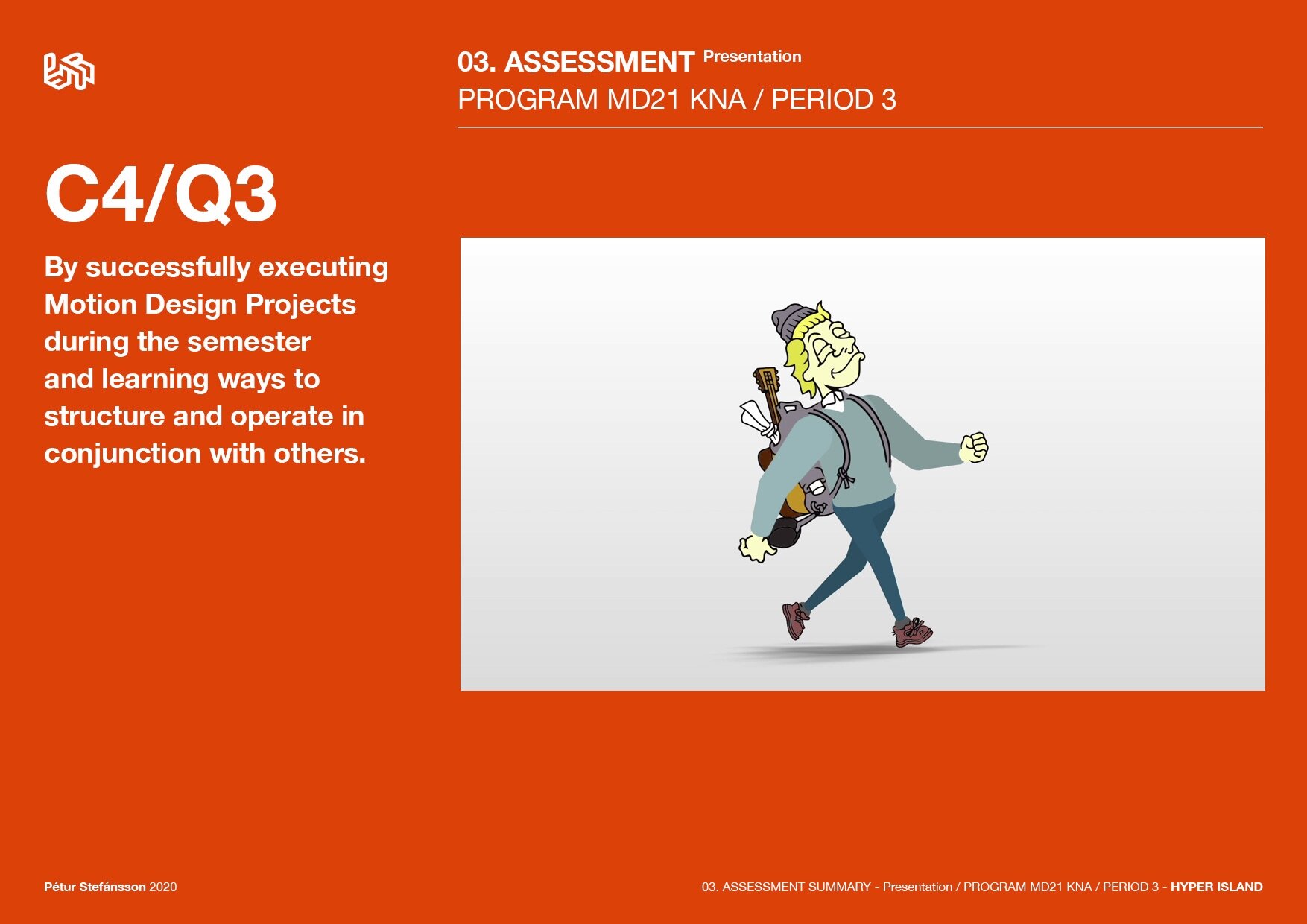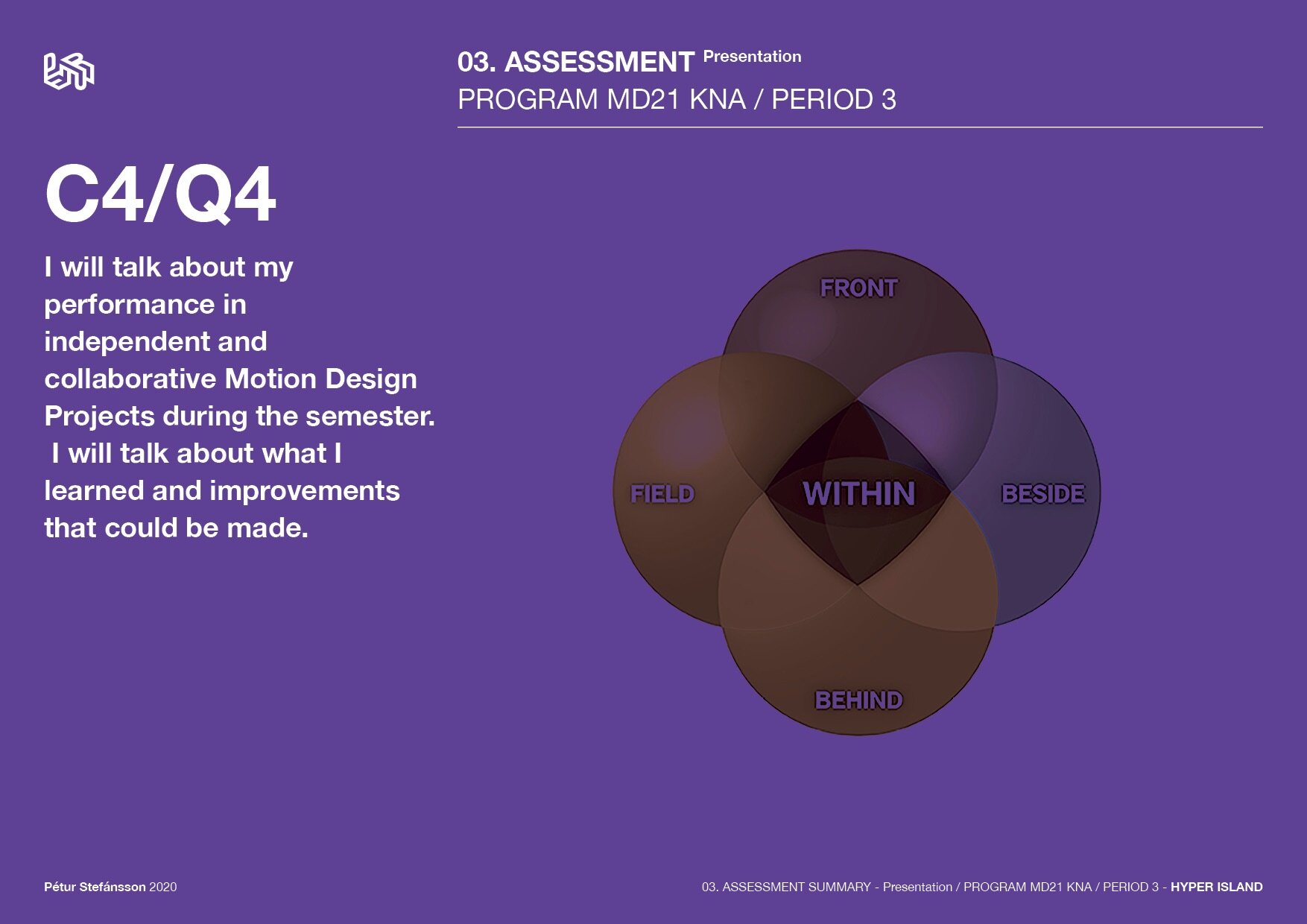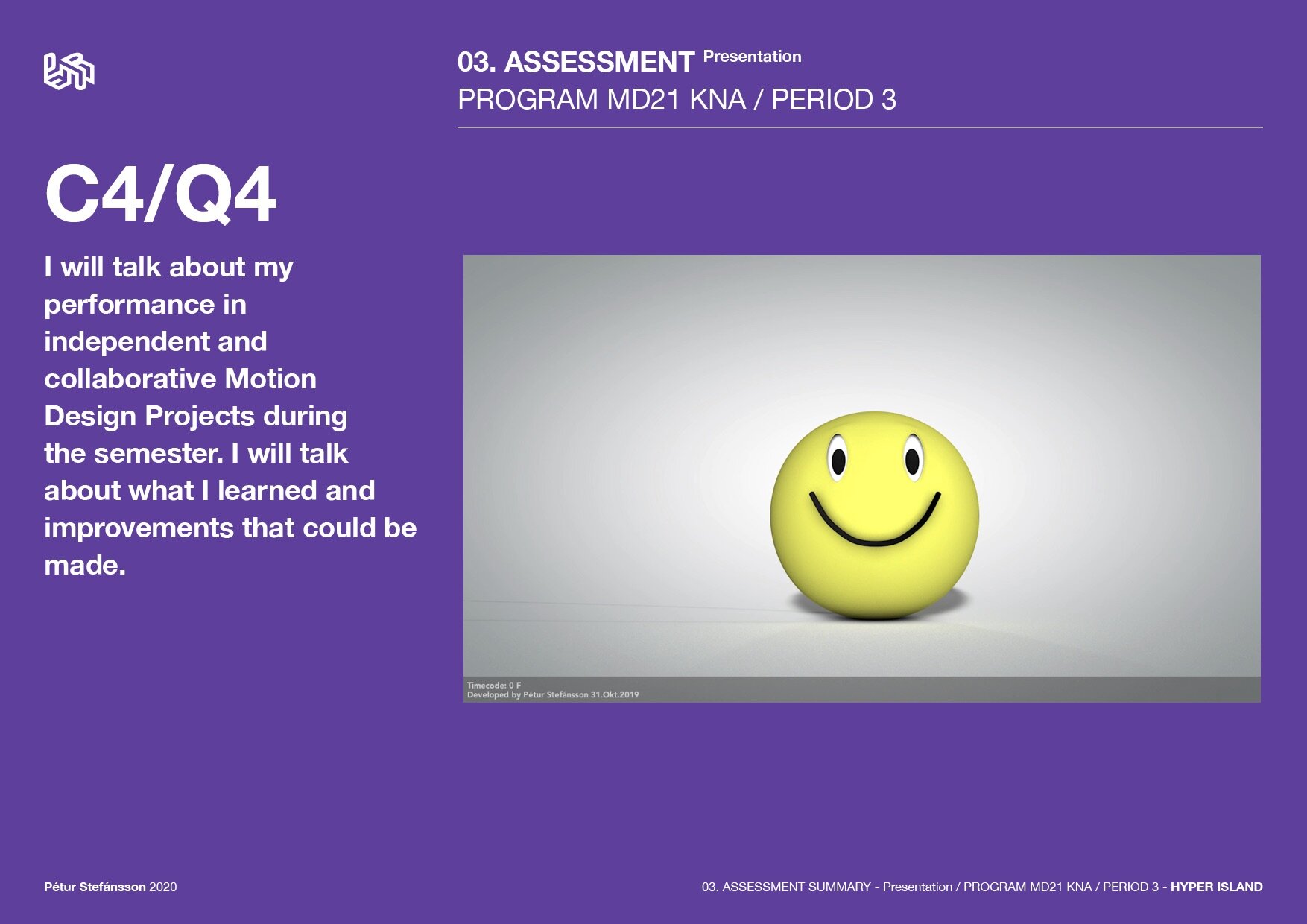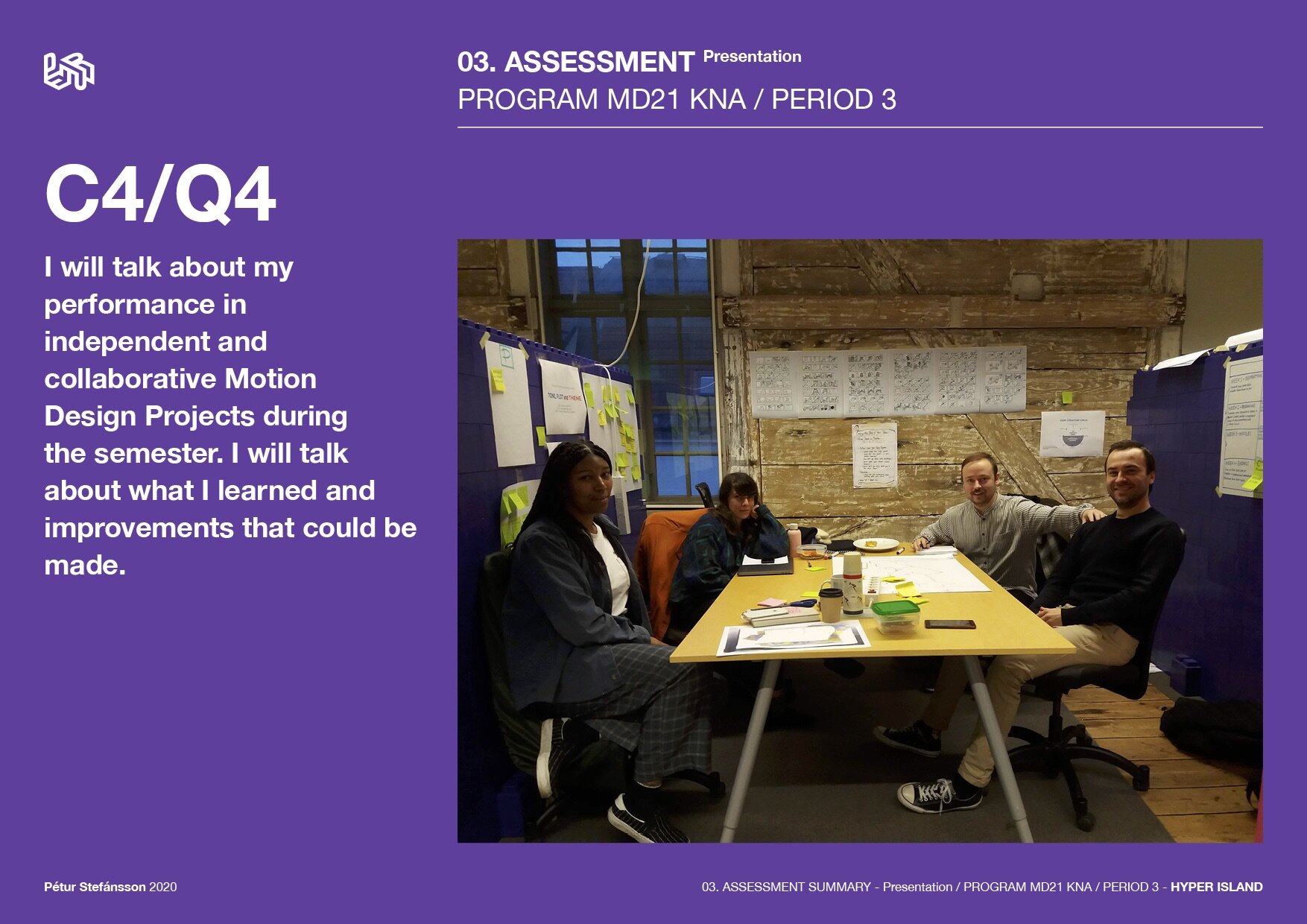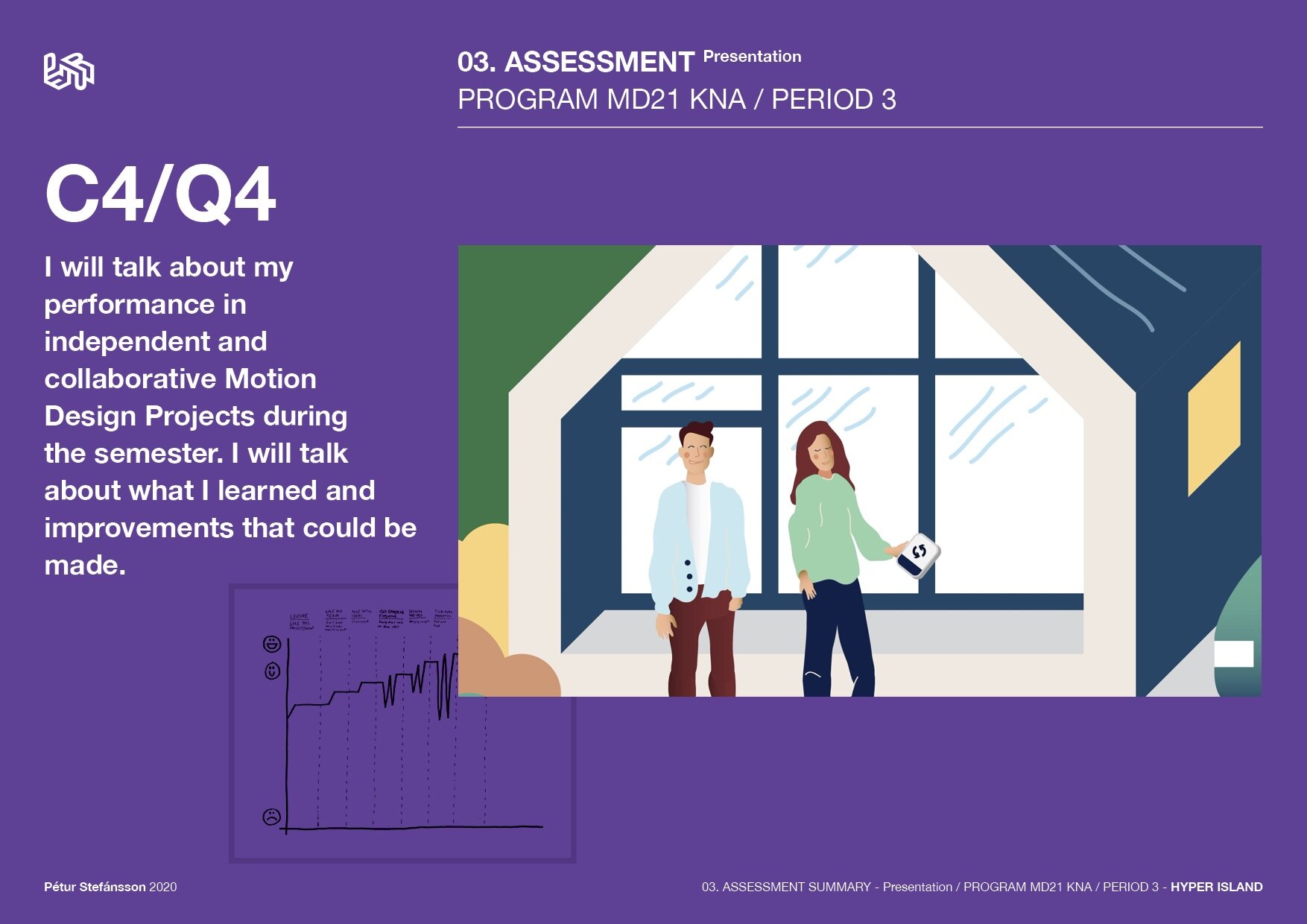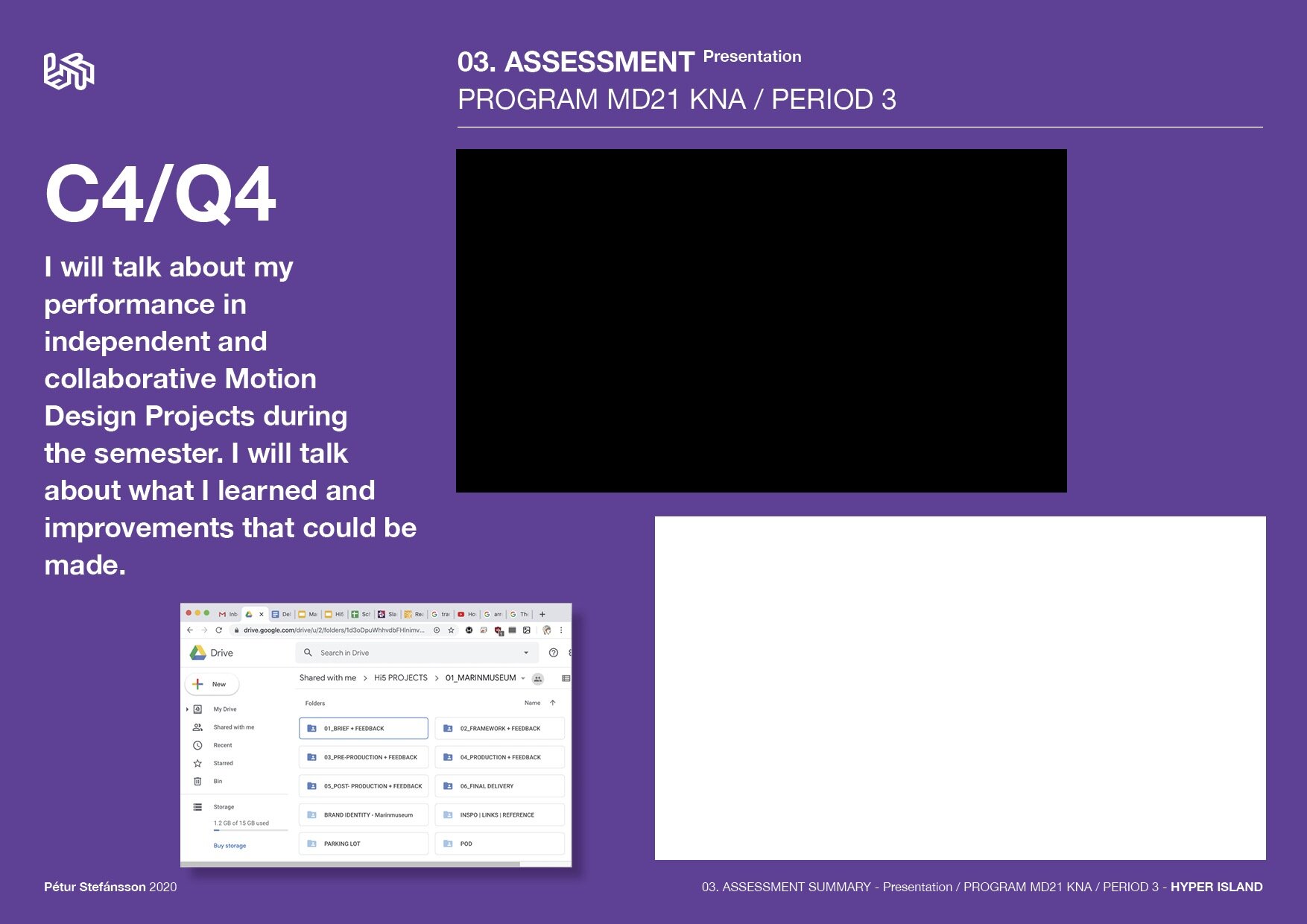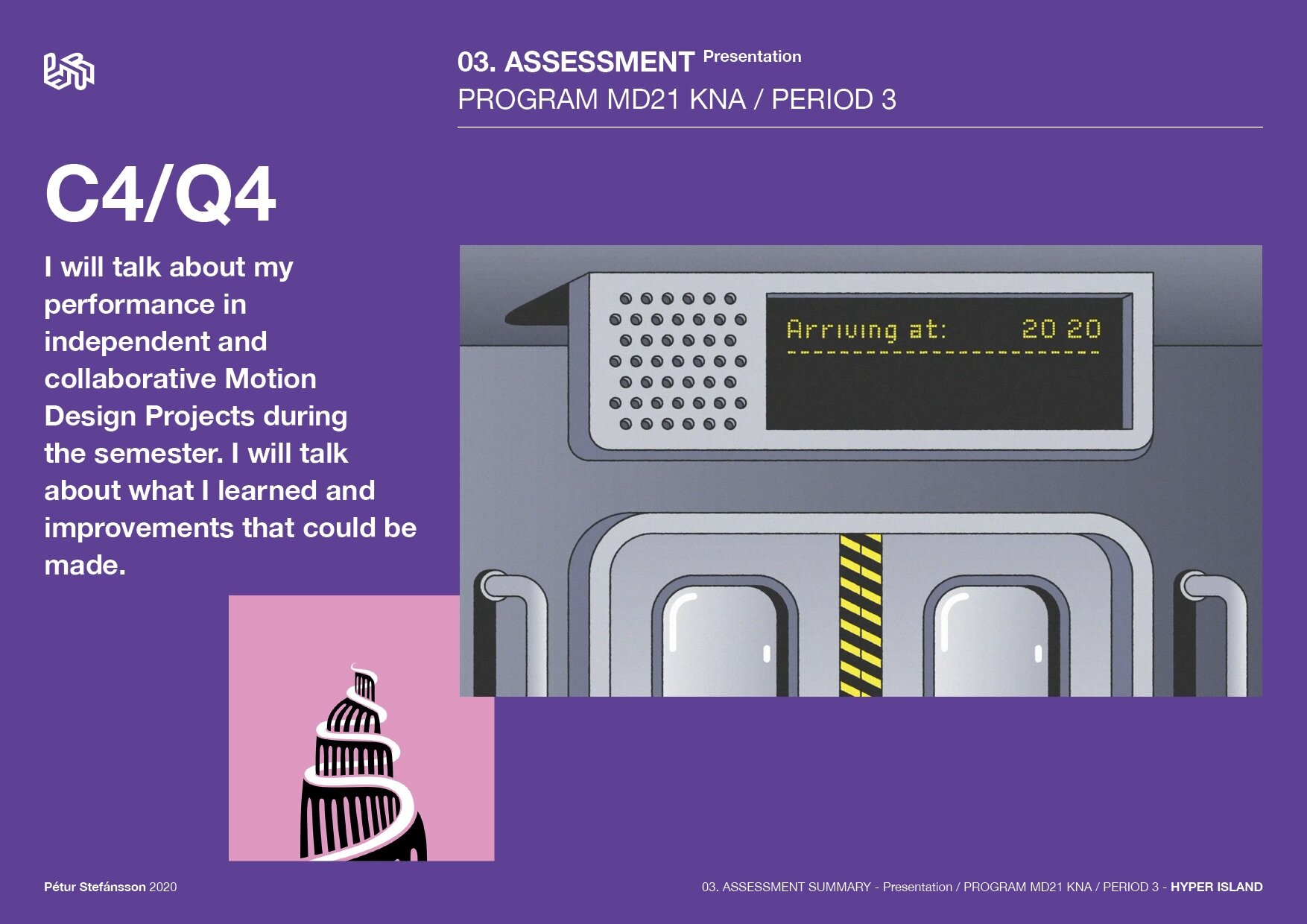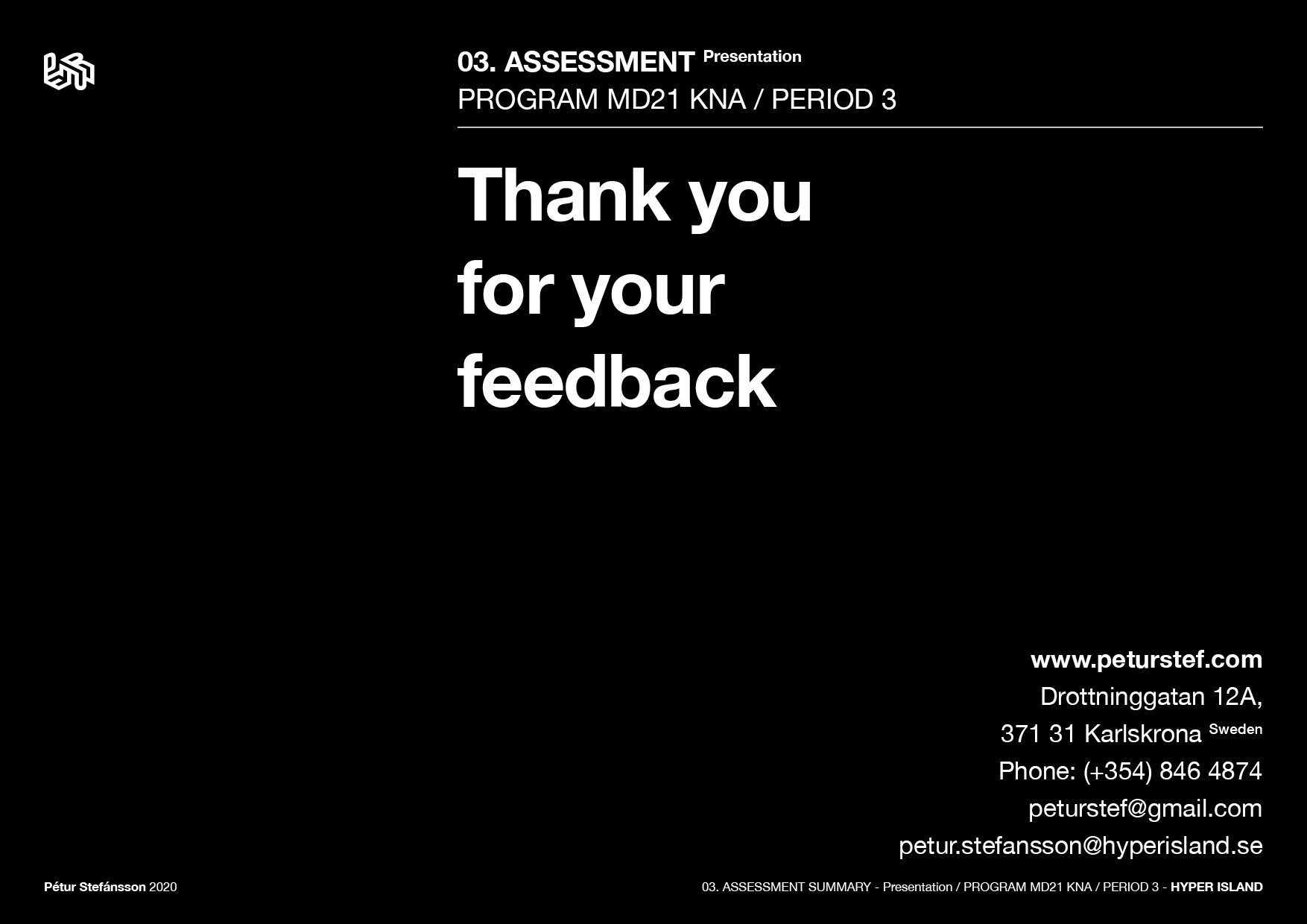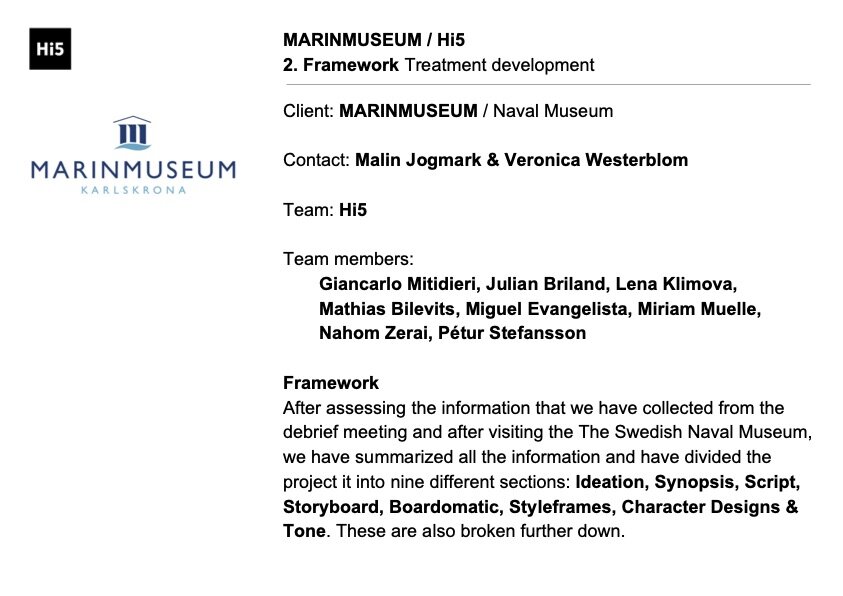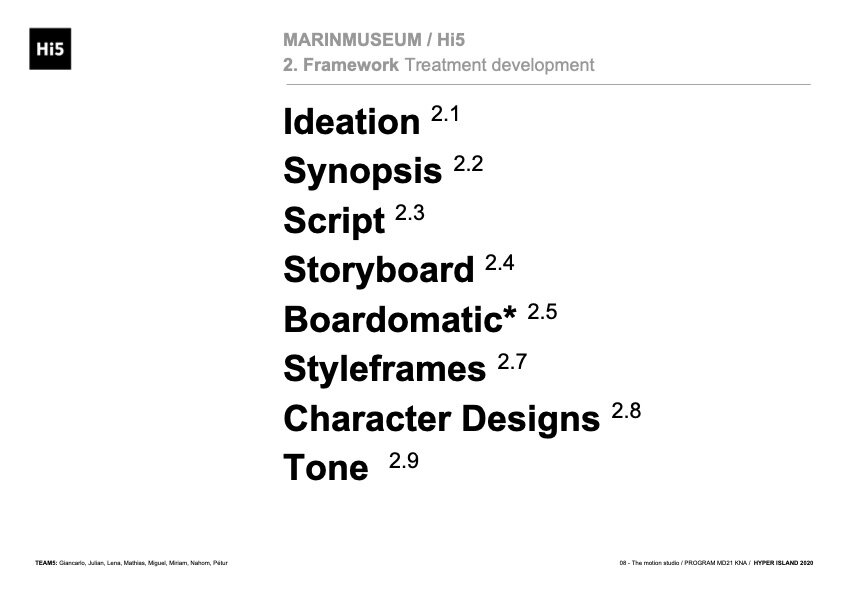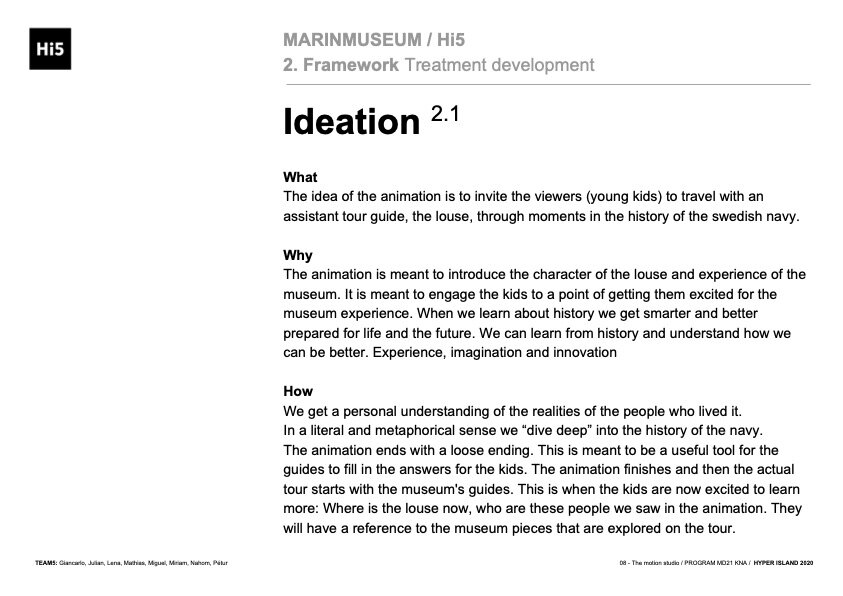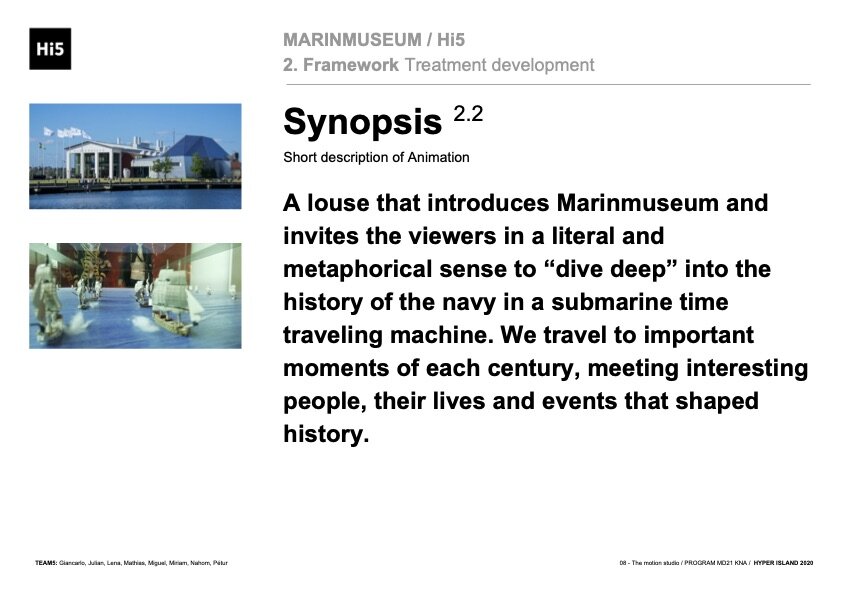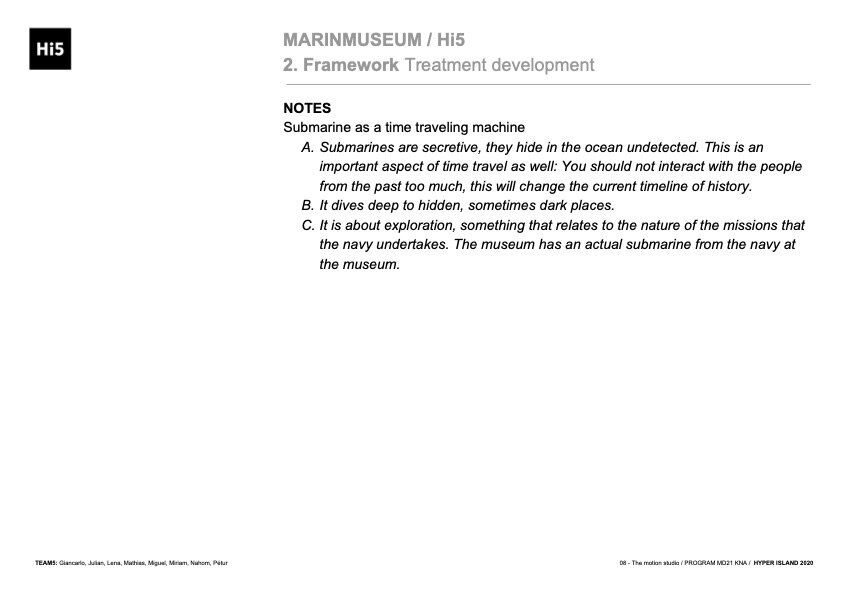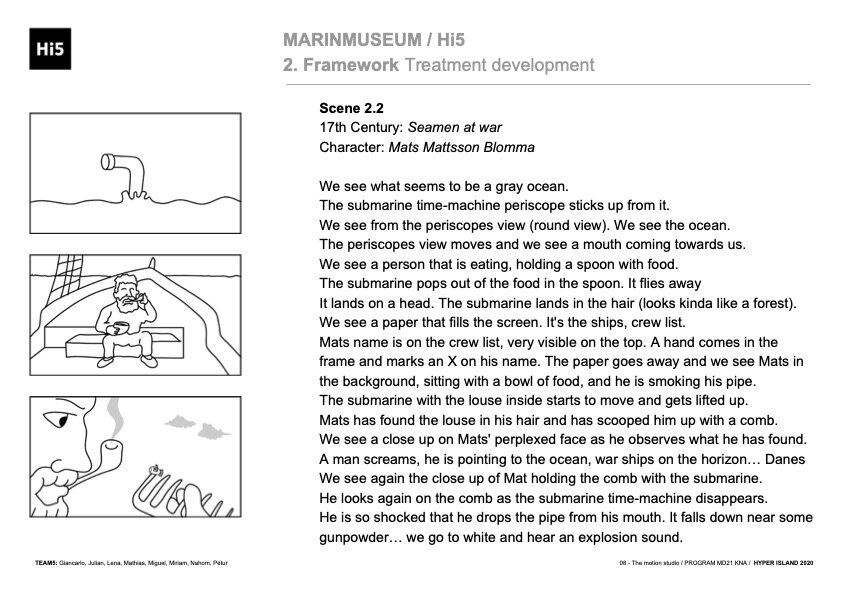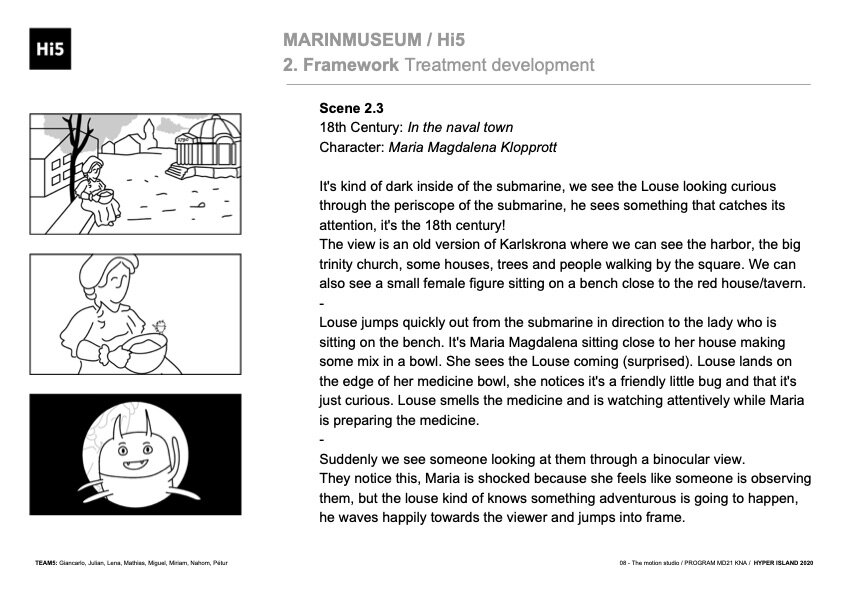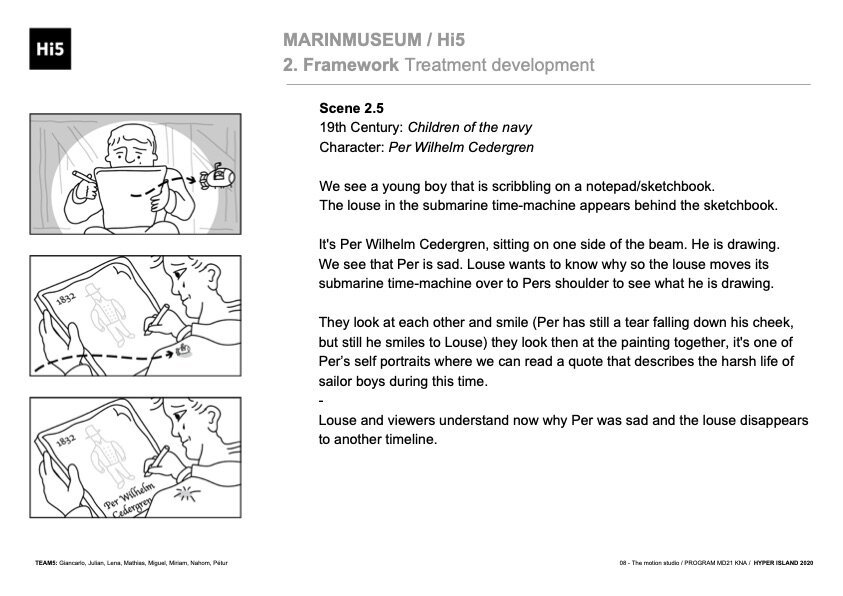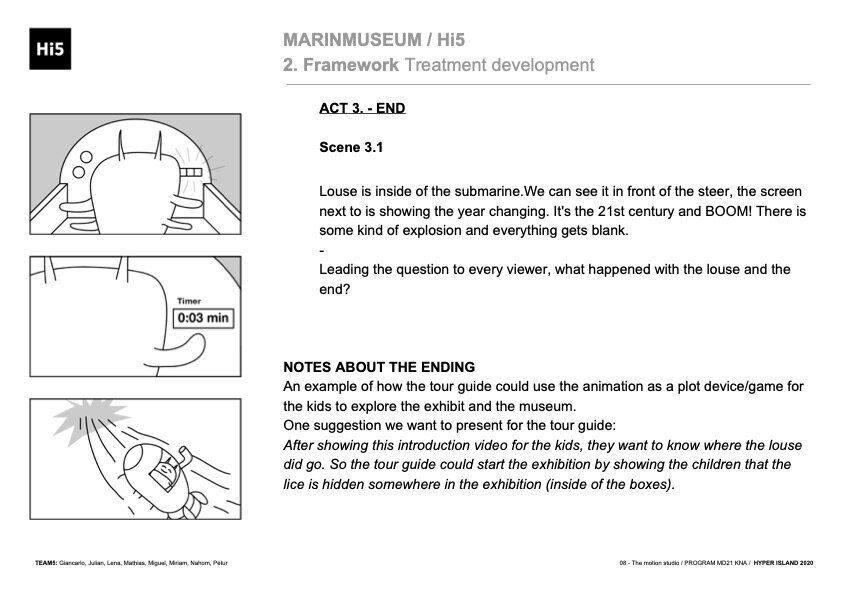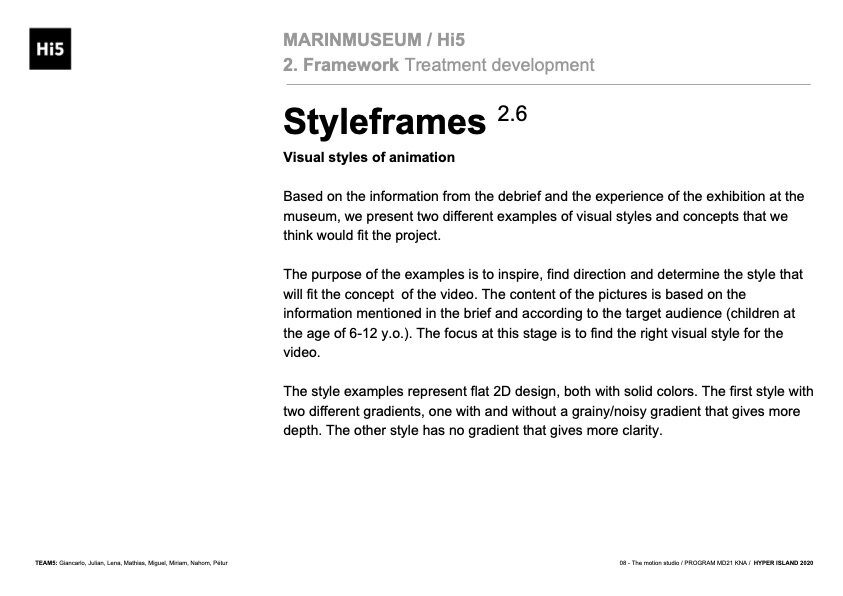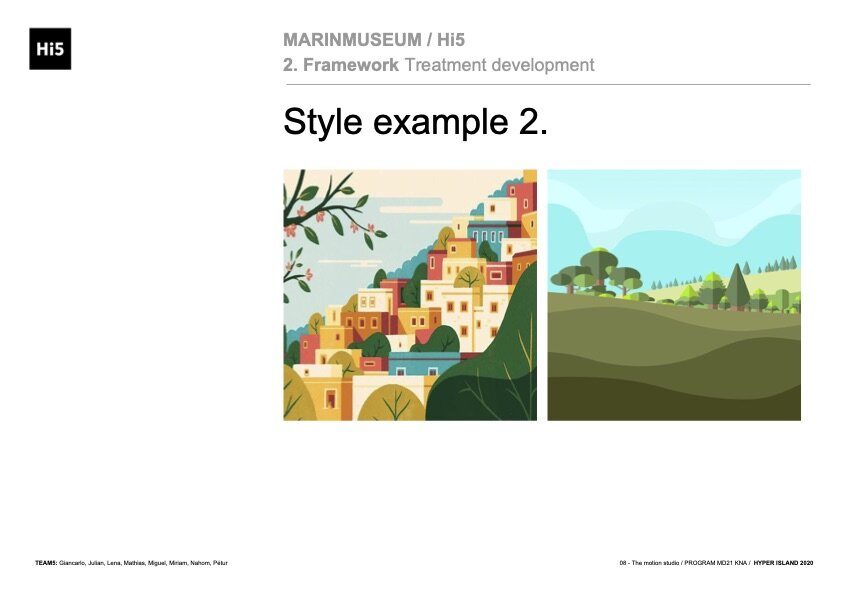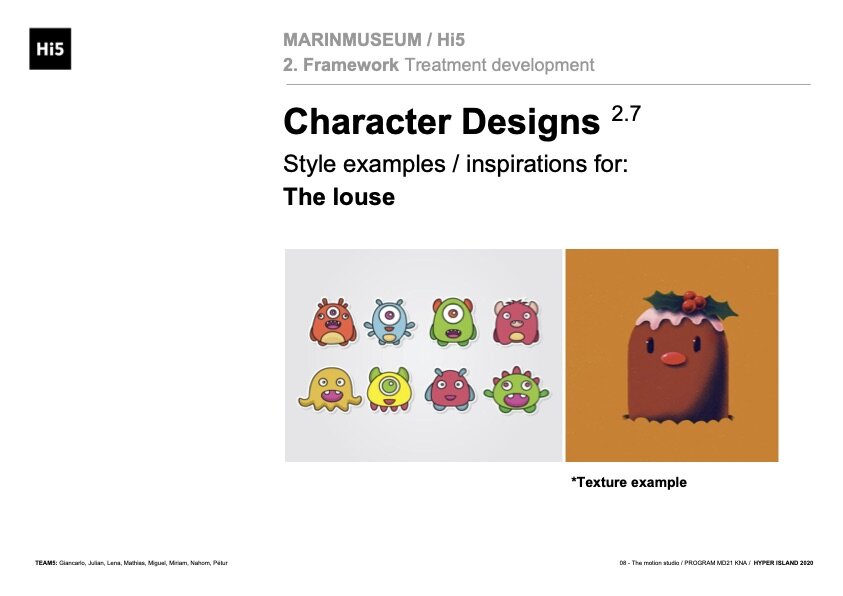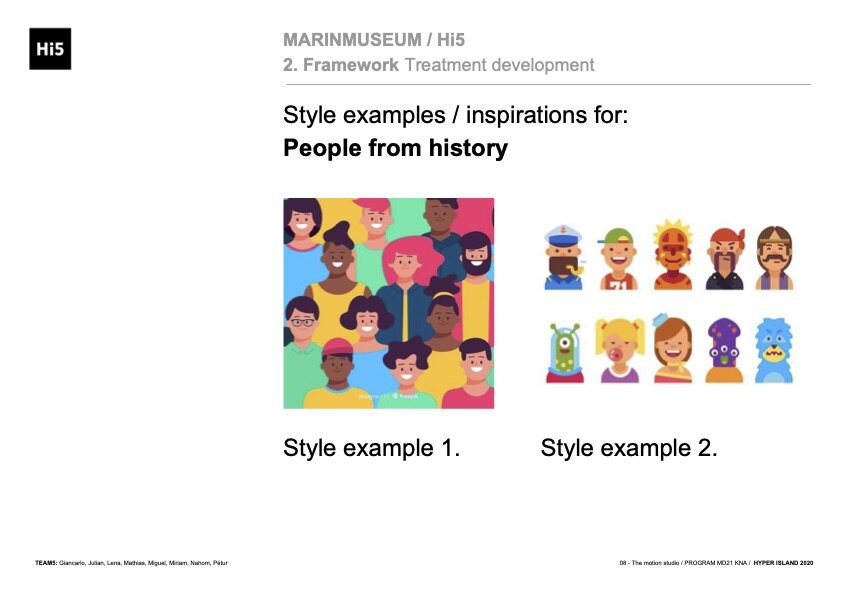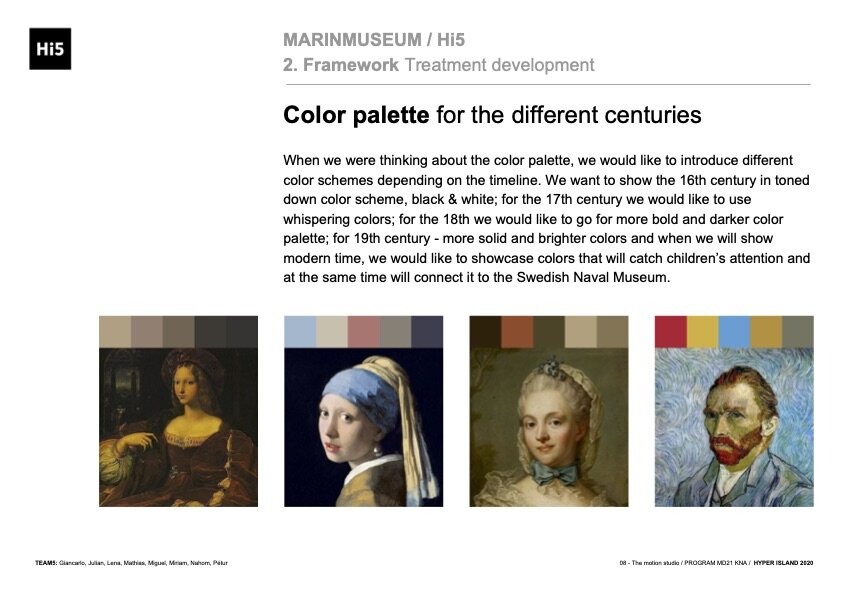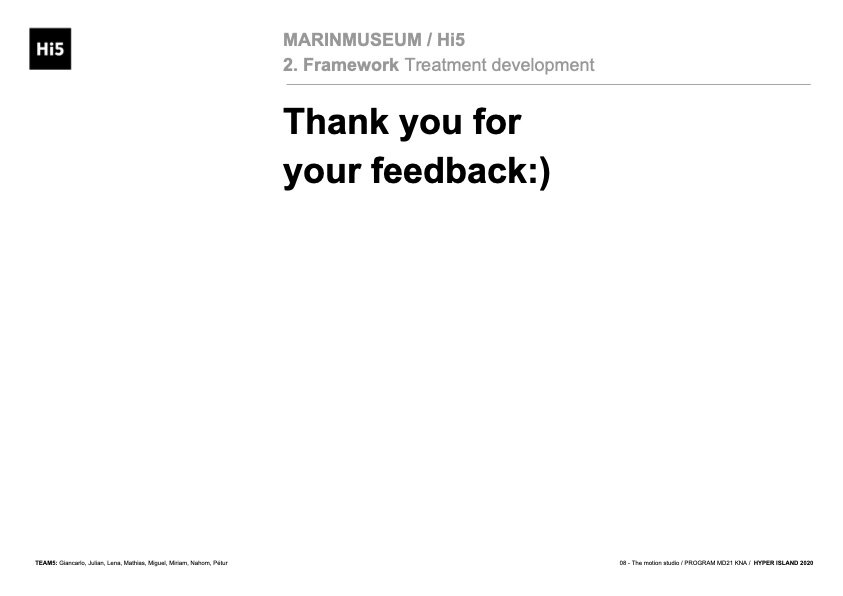Date:
Student:
School:
Program:
Course:
EXAMENSARBETE / MD21
2021
Pétur Stefánsson
Hyper Island / Karlskrona, Sweden
Motion Designer
14 - Examensarbete
The Examensarbete is a web-based Learning Portfolio meant to showcase and highlight the work I produced during the Motion Design Program at Hyper Island KNA (2019-2021). It is meant to represent and reflect on my learning journey and showcase my knowledge, skills and competencies gained during the program.
To examine what most prepared me and my professional career in the motion design industry.
MD21 Class of 2019 - 2021 / Motion Design Program - Hyper Island - Karlskrona
Motion Design Program at Hyper Island
Apotek Hjärtat ads for the hair product Apolosophy by the Swedish advertising agency Åkestam Holst
Premise
Motion Design has always appealed to my interests. I have always felt that I have a strong imagination combined with patience and precision. I applied to the Motion Design program in 2019 to expand my skill set. This came about for two main reasons. I had realized how the industry was changing. There is an ever increasing demand for graphic material to have motion qualities and I wanted to be capable of animating my own illustrations and graphic designs.
Students from the MD21 class / Before COVID-19
Students from the MD21 class / After COVID-19
I wanted to be able to mediate interesting ideas and stories, both of my own and for others. At Hyper I learned so much more. How to structure an animation project from all aspects. How to reflect about my work and in collaboration with others. I learned about film theory and animation techniques. I was struck by the element of time and its properties in regards to graphic design. I got insights into the motion design industry and through my education I got a better sense of where I'm situated and where my skills and interests lie in the field.
Intention
When I started the program at Hyper i set out some of my goals:
I wanted to be able to deliver interesting ideas through stories. Practically this means to be part of the ideation process in work related projects in the future.
I wanted to deliver fascinating illustrations. Practically this means to work on sketches, storyboards and be a part of the assets production in a project.
I wanted to be able to deliver great animations. Practically this means to work in animating 2D, 2.5D and cell animation films, applying relevant theories & techniques.
MD21 Courses and Programs / Pétur Stefánsson
Implementation
In order to understand the field of motion, to situate myself in it and evolve my skills in crafting a motion design project it was important for me to involve myself with every aspect of the process. During the time at hyper I had an opportunity to explore and immerse myself into the craft and showcase my abilities and skills in delivering interesting ideas through a story, crafted by myself, using the relevant theories, techniques & tools.
By taking part in the education at Hyper Island I got the chance to construct and produce a multitude and varied projects. I had the chance to deliver illustrations on my own and in collaboration with other students/artists. I deliver animation, done in the appropriate outlet, using programs such as After effects, photoshop, illustrator in a medium that expresses my interests in the field (2D, 2.5D and cell).
Proudest aspects of the education
Managing personal client work projects simultaneously with "school" client projects
During the Program I had the chance to work on personal client work projects alongside "school" client projects. This gave me an insight into the working life in the field. To manage multiple projects at the same time it's necessary to have an understanding of the procedural phases of Motion Projects and some estimation on the time involved.
The skill of managing clients, their needs, expectations and creating an atmosphere of trust is a fine balance, seemingly based on intuition. To know how to realize different perspectives, values and goals of a client and his product as well as the customer and your team. This means in other words, to align with the client on the desired outcome of a project, and knowing the means on how to achieve those results.
This is effectively done by creating an emcombasing brief. An effective measure to understand the Who - What - and Why´s of a project. And a client might not know what they need or who they are, it can be our job to help them figure that out. It's about understanding that: “The client isn't necessarily always right” and that honesty and candor goes a long way. By showing confidence and being able to communicate to the client your own ideas on what could bring about the best results for a project. To know how to express yourself in a manner that forms a confident, consistent vision and expectations for a project while also be able to ask what might seem “dumb questions”. For this to take place, It's important to establish an atmosphere of trust, an almost a personal relationship, where both you and the client can have an honest and open dialogue.
Supergrid / Illustrations & Motion Design by Pétur Stefánsson / Collaborators: Lisa Lennartsson, Miriam Muelle, Henrik Lidén & Ruxandra Nedelcu
Animation Programs gif / Pétur Stefánsson
Developing a personal style and procedure
In the program at Hyper it was an personal goal of mine to develop and define a personal preference in style and character when creating motion projects. I wanted to be able to specialize and/or create a signature style or a brand that could easily adapt to different clients needs. I developed and layed out some preferences in style for my animations that helped me focus my attention. For instance in the course "Concept, brand, treatment and production" we worked with a company called "Supergrid". This is where some of my key design choices started to form, such as using isometric perspectives.
Learning the "hard tools''
I had a limited understanding of the animation programs used in Motion Design, such as After Effects, Media Encoder and Animate, all of which I now use on a regular basis in my professional and private projects. During Hyper we got some insights into the programs but we were challenged to learn them on our own for the most part. This presented itself as a challenge in the beginning but as these programs have an almost universal acclaim, I found that there is a big support network and a multitude of "how to" videos online.
What was the most challenging?
Marinmuseum - Budget & Schedule by Pétur Stefánsson
Stepping out of my comfort zone
By taking on unfamiliar aspects of motion projects, where I didn't have much skills or knowledge about, expanded my learning journey. When working on projects during the first semester of the program at Hyper I found myself unintentionally gravitating to the graphical side of projects, a field which I'm familiar with. But when I witnessed my classmates embrace new learnings with commitment and adherence, I knew I had to step out of my comfort zone and take on bigger challenges. I purposely stept into new areas such as managing teams schedules and budgets, a role I had avoided upto this point and found myself excelling at it. This opened new venues for me to explore in the field of motion.
To understand and apply the methods learned in the program.
One challenge in any learning journey is to know how to categorize and apply the methods gained, and to find meaningful outlets of expressing them in theory and in practice. The challenge is to summarize and/or internalize the personal value of the skills, knowledge and competencies gathered during the program and make them meaningful idiosyncrasies to my way of working.
One way of achieving this during the program was to employ the methods when working in projects. This was most useful when working collaboratively as we could test out methods and discuss them real time. Another way was to document the learning through the assessment procedure. I found this to be of great use and I find myself looking back on my assessment portfolios to reflect on subjects learned.
Demonstrates your top strengths and their significance to your future in the Motion Design Industry
Having a clear and organized production pipeline
When working on projects during the Program at Hyper I realized that some of my strengths came from the organizational aspect of a project. I had the chance to step in as a team leader, handling clients and directing the creative process as well as illustrating and animating, but I also found comfort, authority and aspirations in the management side of projects. Creating oversight in making schedules, budget and structuring the design process. This helped alleviate tensions in the teams efforts to produce and work on complex design projects.
When working on briefs and treatments I feel it's important to express the design teams ideas in an effective, direct and simplified manner. This is where my graphic design skills came to good use. It's about the importance of keeping a record / documentation for a project's development - for meaningfully, constructive reflections and how to have a structured setup and create and keep an efficient project progress and development. I experimented with different programs to host and share material created through the process.
By delegating some time in the initial stages of projects to define the structure in which to proceed you create an efficient, organized team. This is a way to save valuable time and resources and evade disorder. By dedicating your team to a specific production pipeline, designed to fulfill a project's brief and requirements you will maximize the efforts by a design team and create the foundation for multiple projects coexisting in the workplace.
Creating a treatment for a motion design project
The groundwork for a successful motion project comes down to, in a large part, an clear and comprehensive treatment. During the Program I learned the importance of a well drafted treatment. This involves knowing how to plan, construct and organize the process of making a concept for a motion design project, and being able to lead and manage such a procedure to a finished, functioning product. This means moving from and taking note of info gathered in Briefs and Debriefs. In order to have a structured project we must understand and have a clear overview of the process of making a treatment. I worked with team members to focus our attention on making a consistent, comprehensive treatment presentation that dealt with every aspect of our ideas. This was meant to give the client the most thorough overview of the project and how we perceive the project's direction
Marinmuseum / Collaborators: Giancarlo Mitidieri, Julian Briland, Lena Klimova, Mathias Bilevits, Miguel Evangelista, Miriam Muelle, Pétur Stefánsson & Nahom Zerai
Apply relevant crafts, tools and methods to produce a streamlined production phase
When designing a motion project it's essential to know the principles of animation. To design movements according to those principles and knowing how to achieve those motions in the relevant program. By being aware of how to achieve those aspects when designing your streamline the process.
When designing it's essential to have an overview of the story being conveyed. This is achieved with informative storyboards, boardomatics and/or animatics. When the project is ready for production it is important to create assets that take in those movements to consideration.
This is where I found one of my strengths in making a motion project. To be able to see forth the complete use of my assets before animating them. This saved time, not having to backtrack too much and having to draw, design and make new assets in scenes that were mostly fully developed. To achieve this it is advised to finish all assets and have a stylistically coherent project, before starting to animate.
Demonstrates your biggest areas of growth and their significance to your future in the Motion Design Industry
Understanding a Motion Design Projects Phases and its structure as well as the optimal procedure implementation
One of my biggest areas of growth was to understand the procedural aspect of Motion Design. To know the different areas and its dependency on each other. This gave me a clear image on the "landscape" of Motion design and knowing where to situate myself in that process and in the industry as a whole.
Personal Project - Schedule & Work Plan / Pétur Stefánsson
Understanding the team development process
The most comprehensive model of team development is called the Integrated Model of Group Development (IMDG). The model see´s team development in four key stages: First, Dependency and Inclusion - Second, Counterdependency and Fight - Third, Trust and Structure - Fourth, Work and Productivity - Finally, Termination
The stages will look different for different teams and they won’t necessarily happen in a linear fashion. Many teams will get stuck and sometimes regress, before moving forward. These are necessary components to be aware of in a team setting when working in the Motion Design industry. I learned to trust my instincts and not shy away from speaking my mind. It's a part of the process to give constructive criticism and know how to value the ability to give honest feedback.
Expanding my knowledge in the professional field of Motion Design
During the program at Hyper we learned about all aspects of creating a motion design project. This helped to inform us and understand where our creative talents lie in the field. This means to understand the day to day operations of experienced individuals in the field of Motion. This also means to form contacts with industry leaders as well as students transitioning as professionals in the motion design industry.
Best prepares you for your future working in the Motion Design Industry
Theories & Models that underline the collaborative process / Diagram by Pétur Stefánsson
To understand the theories and models that underline the collaborative process and the communal/collective aspect of working in a team
The principal theories of how people work together in small and large groups and how they progress, function and take action. This is the part of the education that makes Hyper Island stand out in regards to their programs, its the schools signature approach to learning and working.
A matter of 1 ́s and 0 ́s / 05 - Storytelling Course - Period 2 / Team: Victoria Sallamba, Ruxandra Nedelcu, Aleksander Frostelén, Pétur Stefánsson
The task for me was to learn how to recognize and take actions derived from them. In the first weeks we were introduced to exercises meant to speed up or tighten the group, the bond between individuals in class, as you would hope to do in a studio.Working with a diverse collection of people with different skills, experiences and backgrounds, will broaden your experience. The power of collective learning. And "make you real world ready", in the sense that, we will learn to form a class group and work together in teams, much like we will do working in teams in companies.
I learned about useful team exercises such as CHECK-INS, POD (Point of Departure), IDOART (Where we set daily agendas and align the team), TDS (Team Development sessions) as well as REFLECTIONS. All of which I aim to introduce to co-workers in the near future.
Co-active leadership Diagram
The Co-active leadership principle is something that I think many practice on a daily basis without knowing it. It dictates that you can be a leader in different ways in a team setting. It's important to be an active, effective team member that contributes to a good team dynamic and helps the project move forward. Its requirement is to sense the team's needs and mood. To know how to employ an appropriate leadership style based on the situation that arises in a team project.
For instance you can be a leader in the front (red): by providing guidance, direction and purpose in a group/team setting. Within: Taking responsibility for yourself, your values and leading an alignment with those values in a group/team setting. Behind (Blue): Having an overview of what is needed for a group/team, what holds it together, encouraging and careBesides: It's about partnering the group together and creating a synergy between different strengths of team members. Field: Exploring new ideas and bringing insights to the group/team setting
